
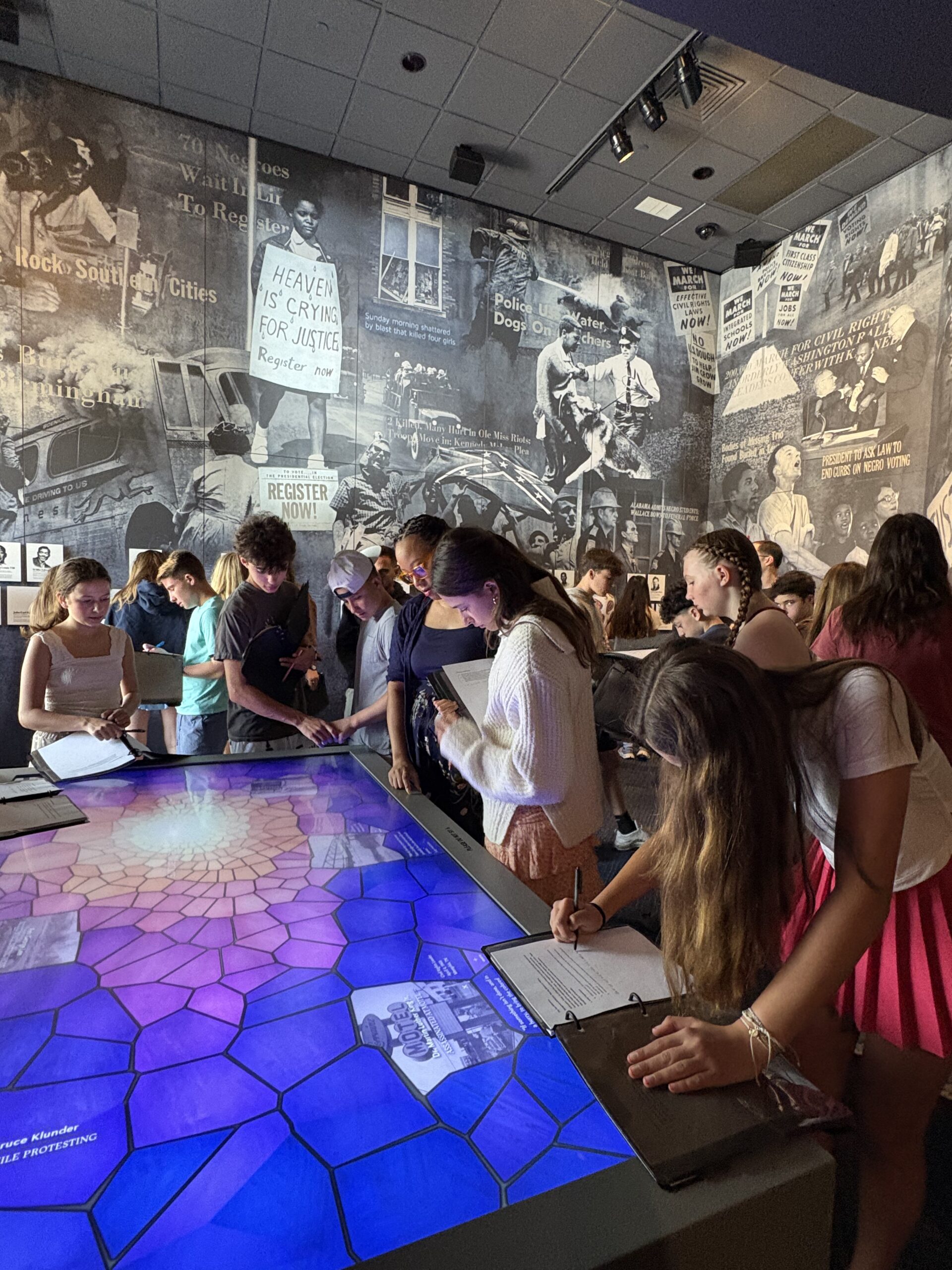
The day began with breakfast at the hotel followed by a visit to the Southern Poverty Law Center’s Civil Rights Museum and Memorial in Montgomery. The SPLC was founded in the wake of the Civil Rights Act of 1965 and has since expanded to include researchers, educators, and community organizers who are tracking hate groups and fighting legislation that restricts civil rights.
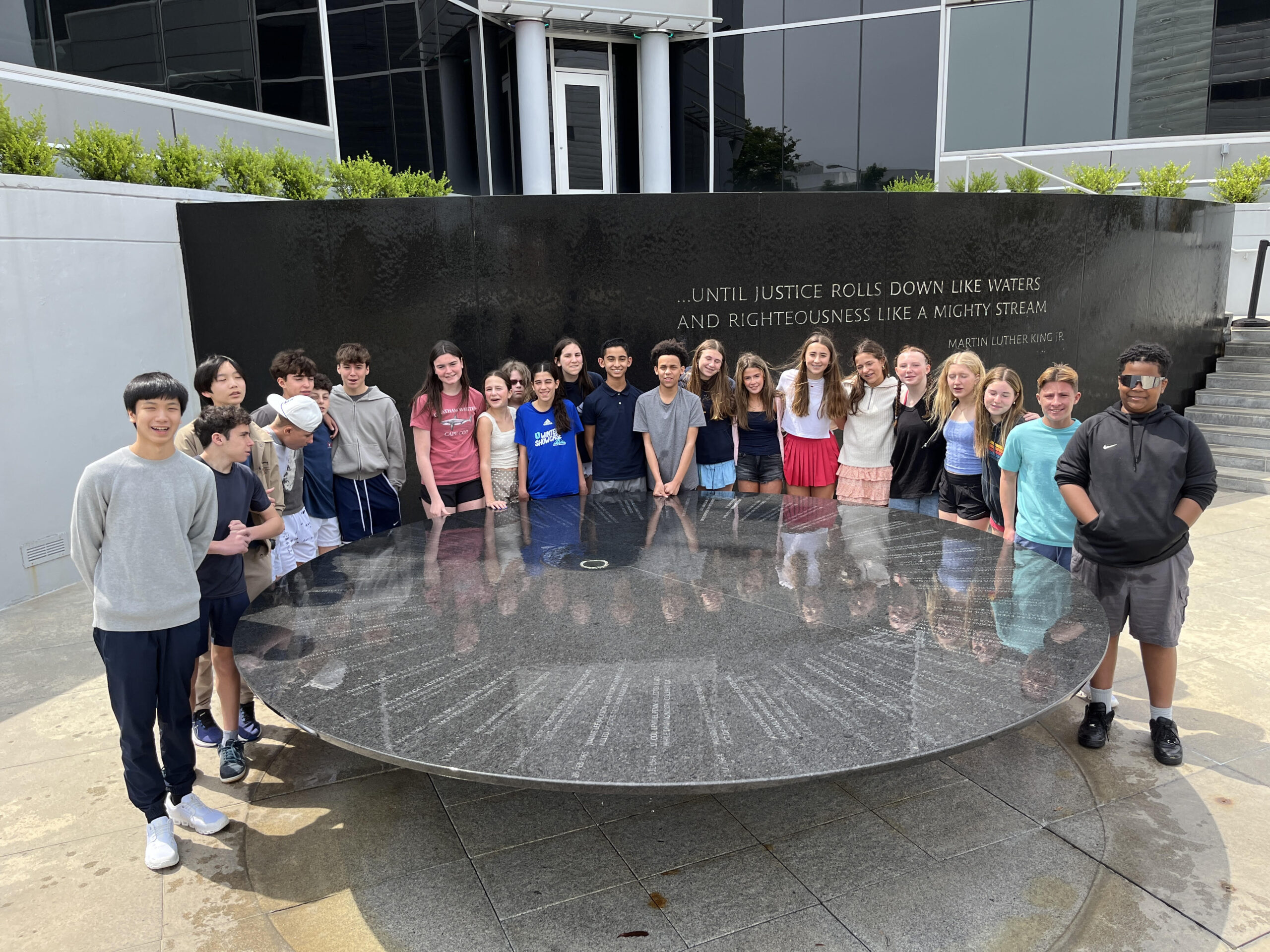
The Civil Rights Memorial at SPLC (pictured here with the Class of 2025) is a tribute to martyrs of the movement. The memorial was created by artist Maya Lin and dedicated in 1989. Lin found inspiration from MLK’s I Have a Dream Speech: “We will not be satisfied until justice rolls down like waters and righteousness like a mighty stream.” On the Memorial’s circular table, water emerges from the center and flows across a timeline of the movement and over the names of 40 martyrs.
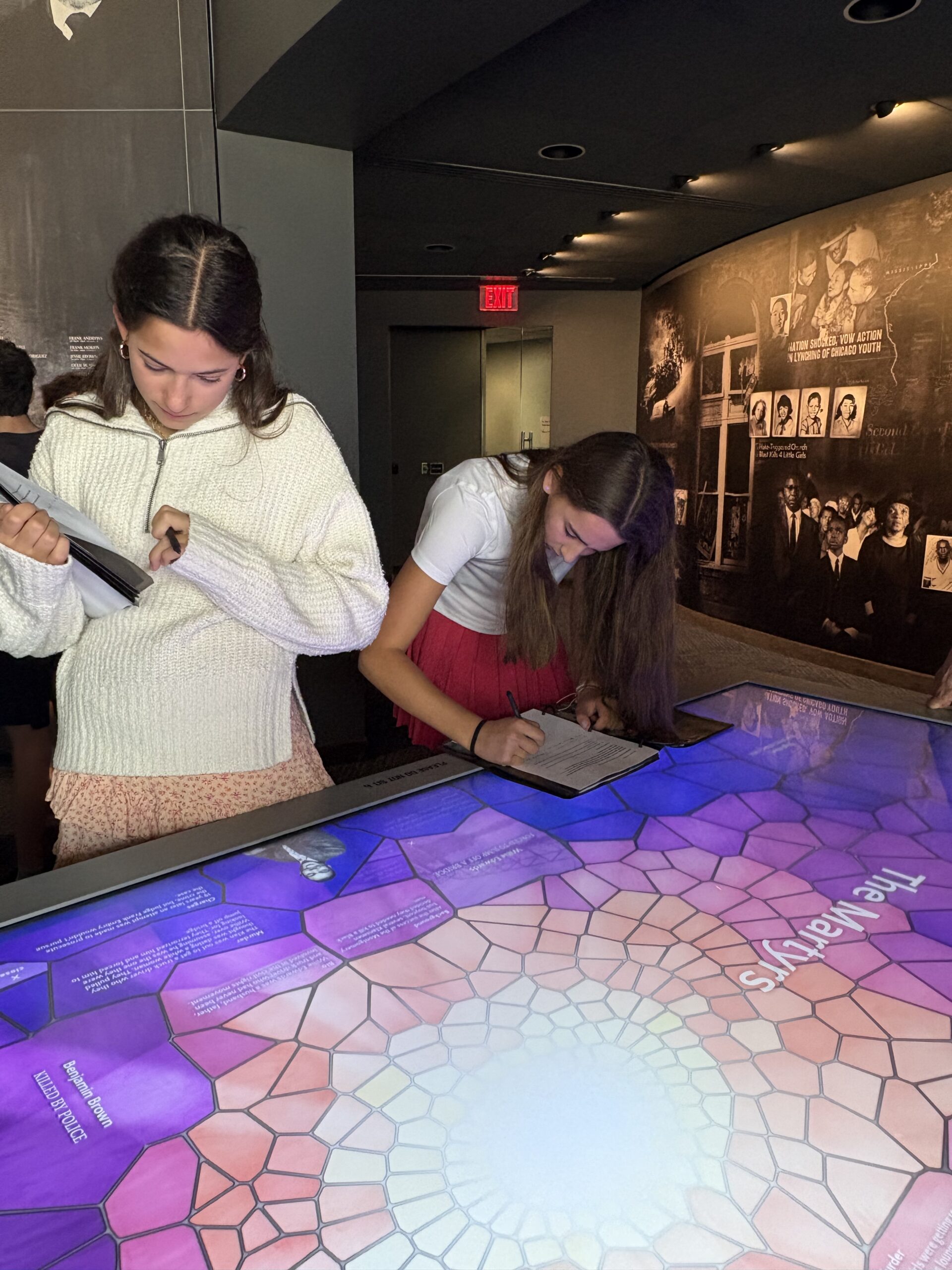
The SPLC is centered on what each person can do in their sphere of influence to fight for justice, equality, and human rights- the ideals for which the Civil Rights martyrs died. CRS students chose to sign the Wall of Justice and pledge to take a stand against hate, injustice, and intolerance. Their names cascaded digitally across the wall with many others, similar to the flow of water on the memorial.
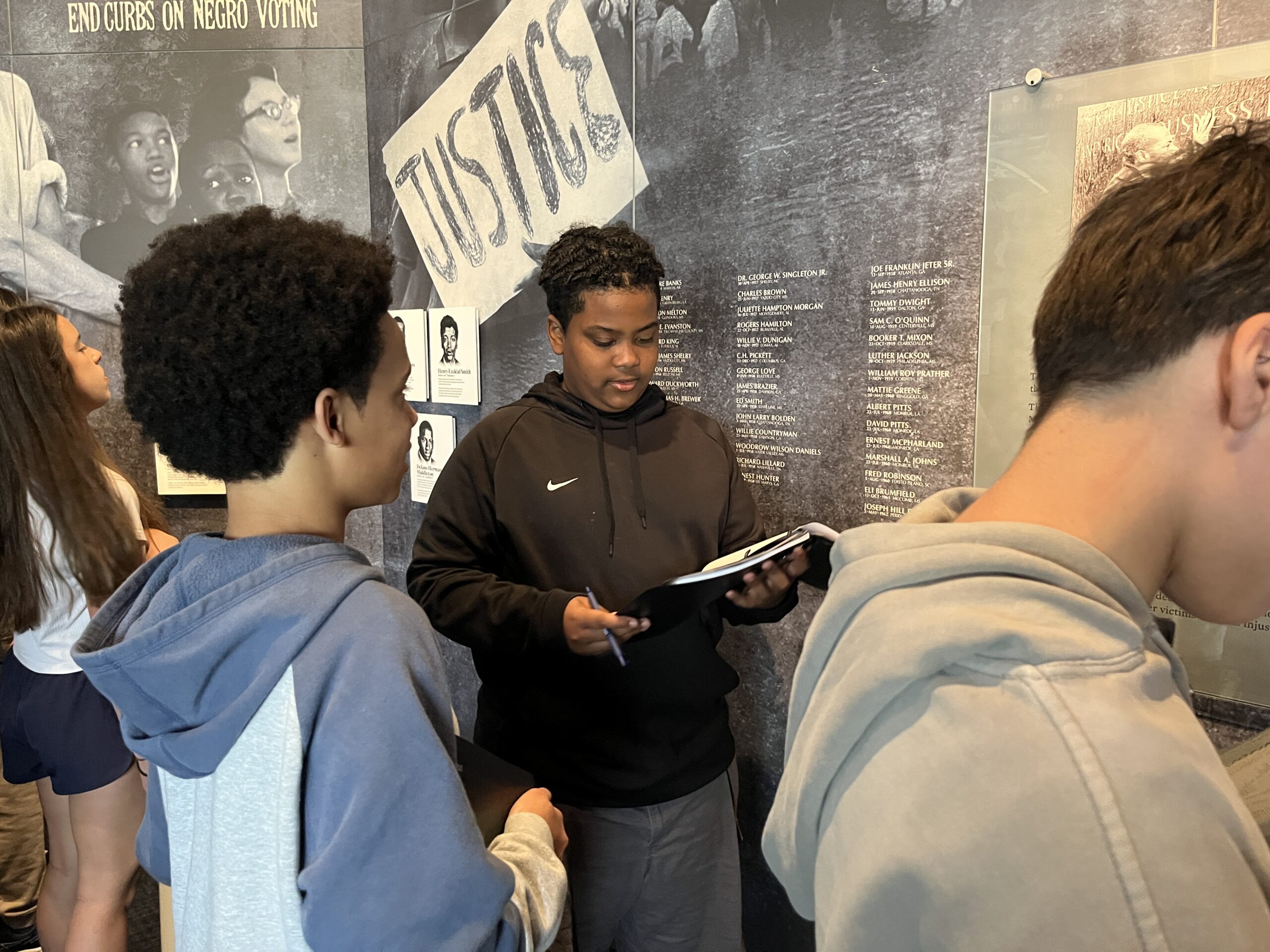
Students students visited each exhibit: The Martyr Room, Apathy is not an Option, The March Continues, and the Wall of Justice.
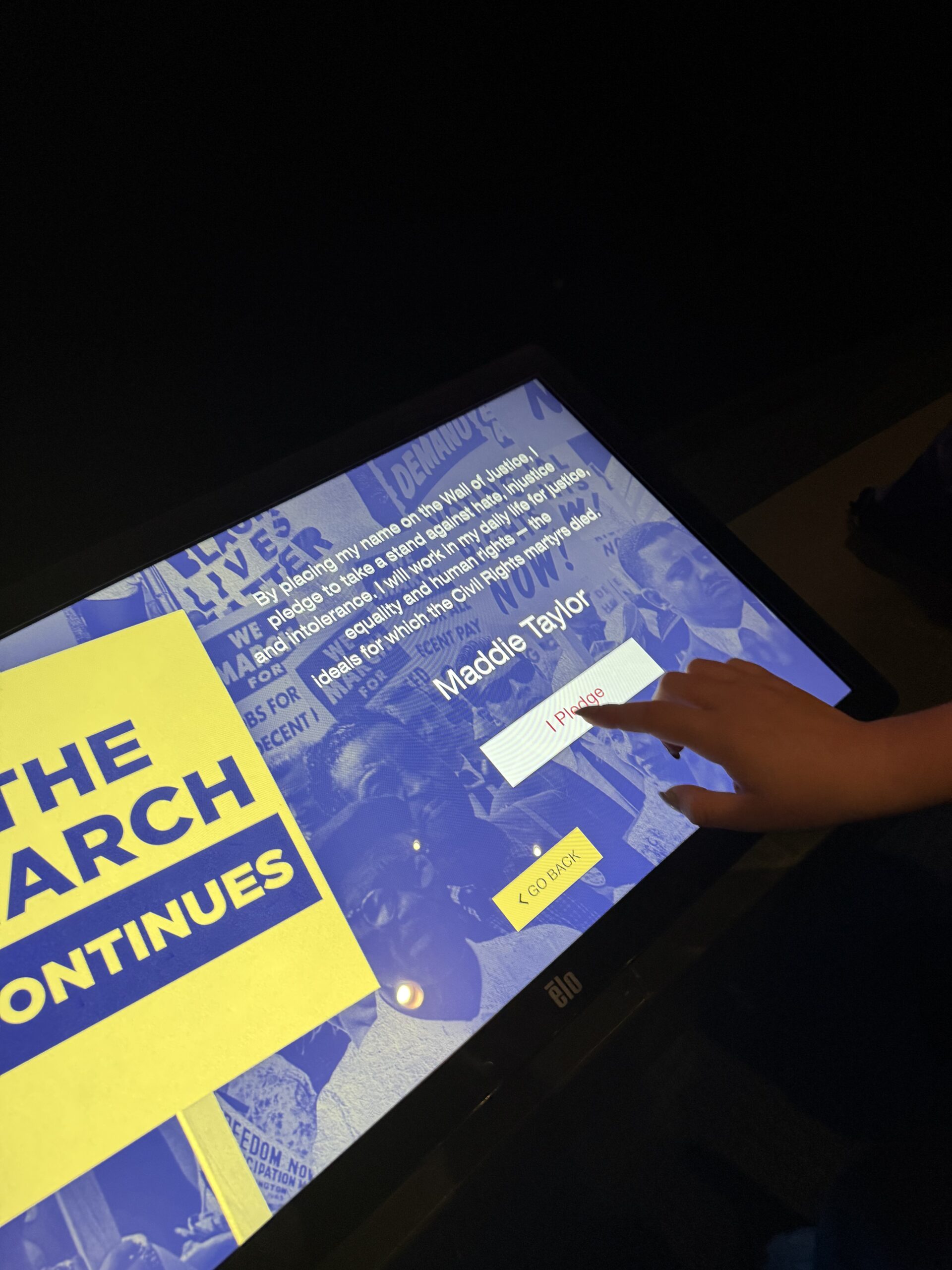
Students signed the pledge.
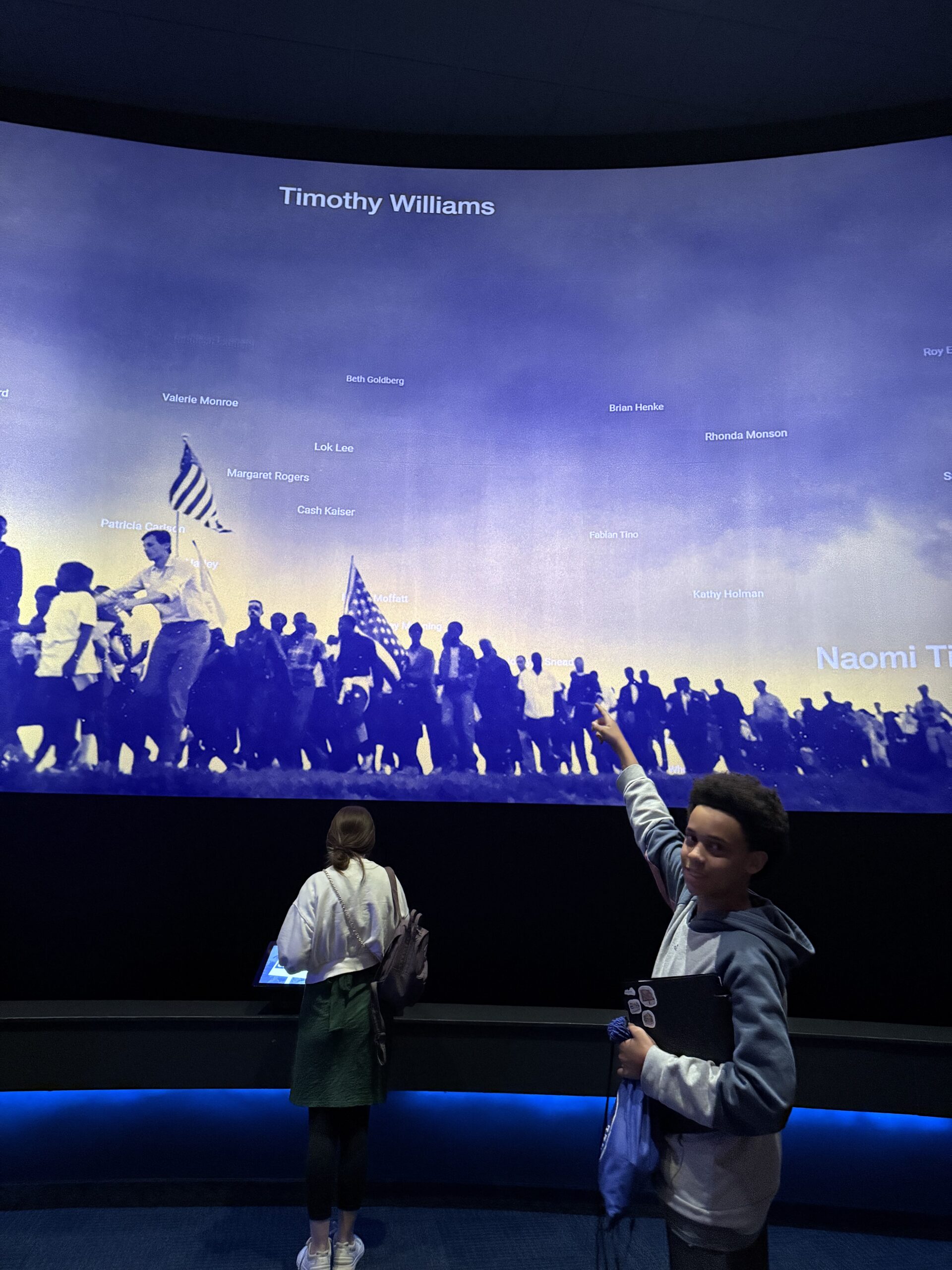
And their names were displayed on the Wall of Justice.
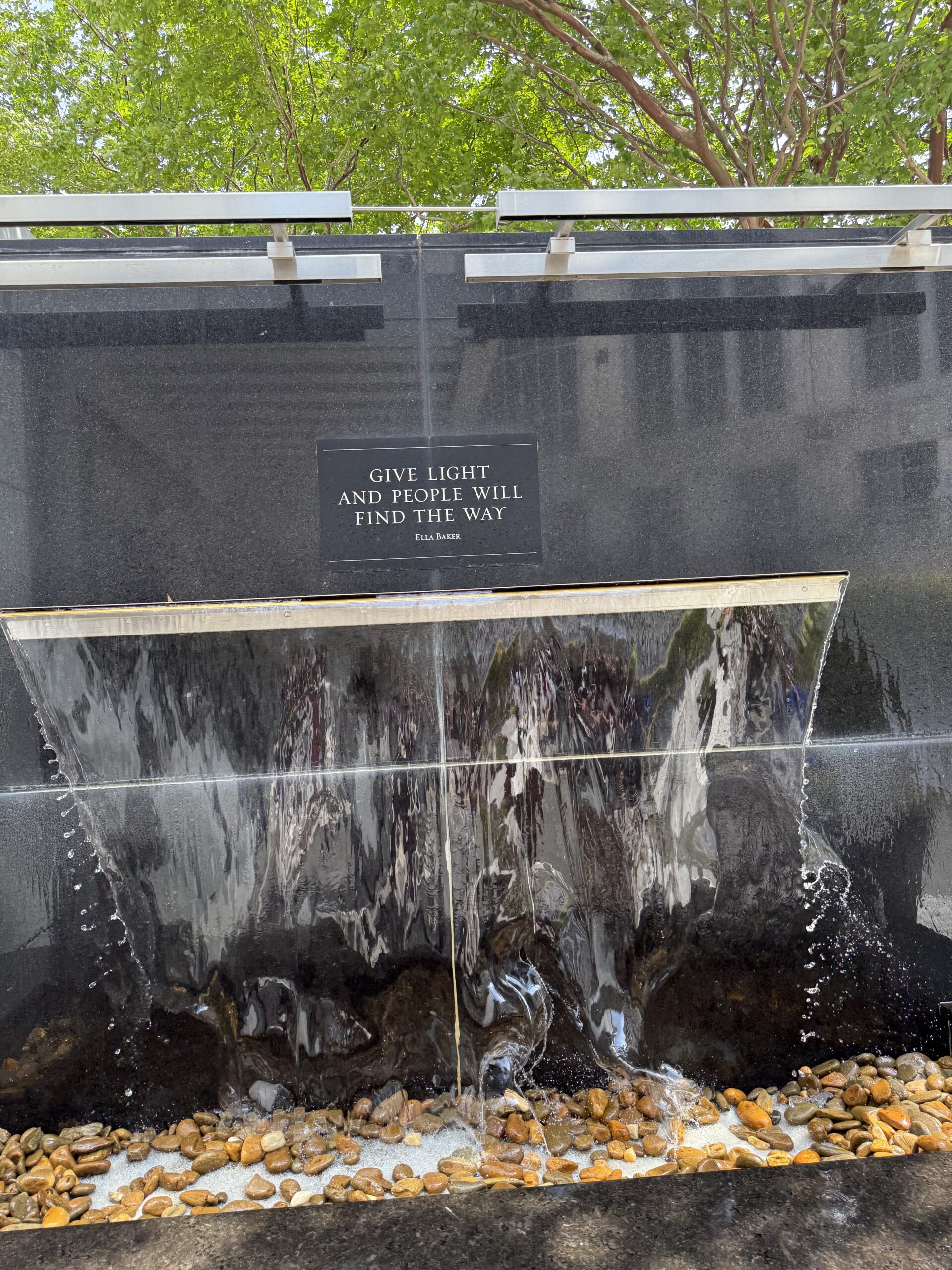

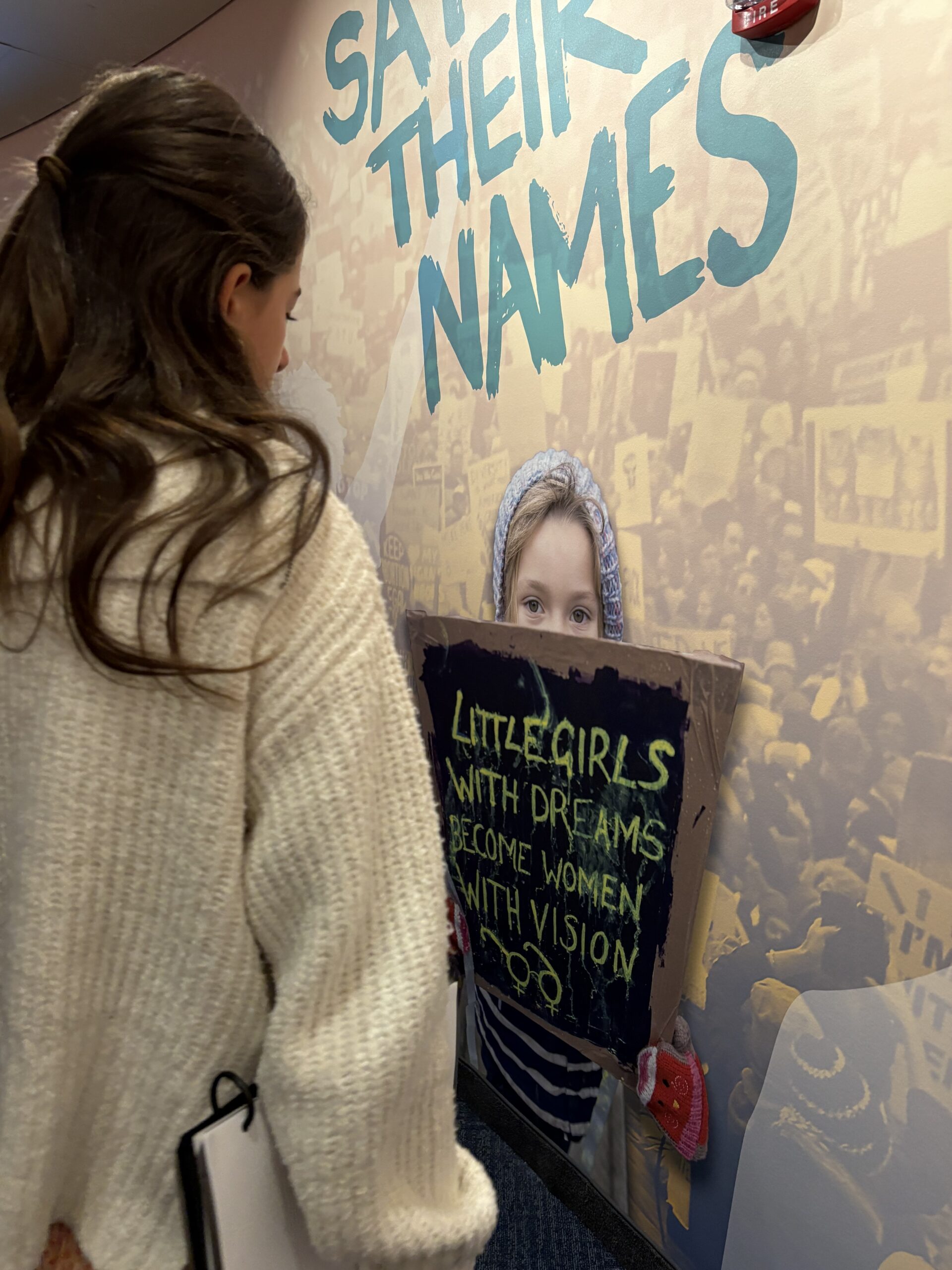
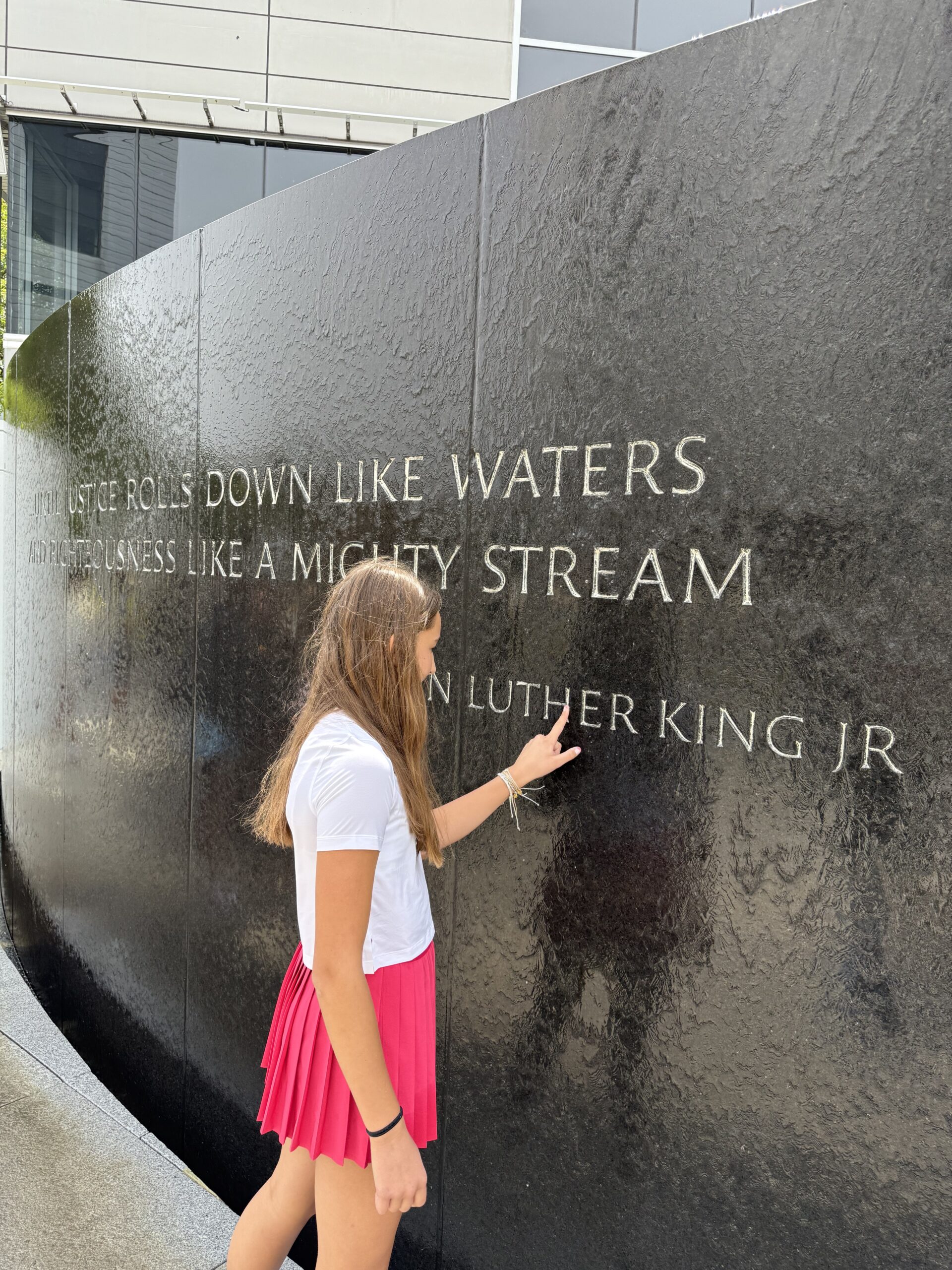
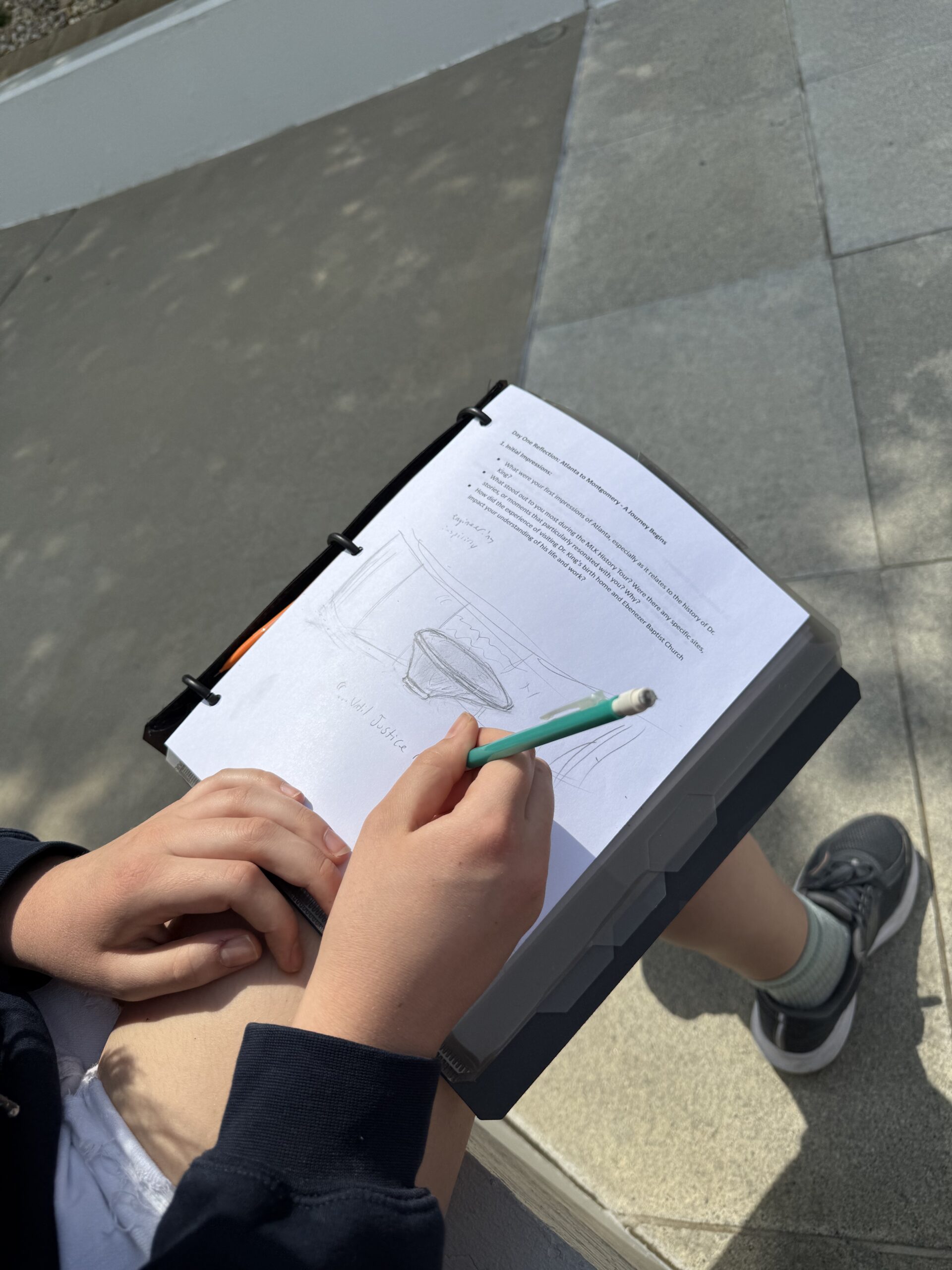

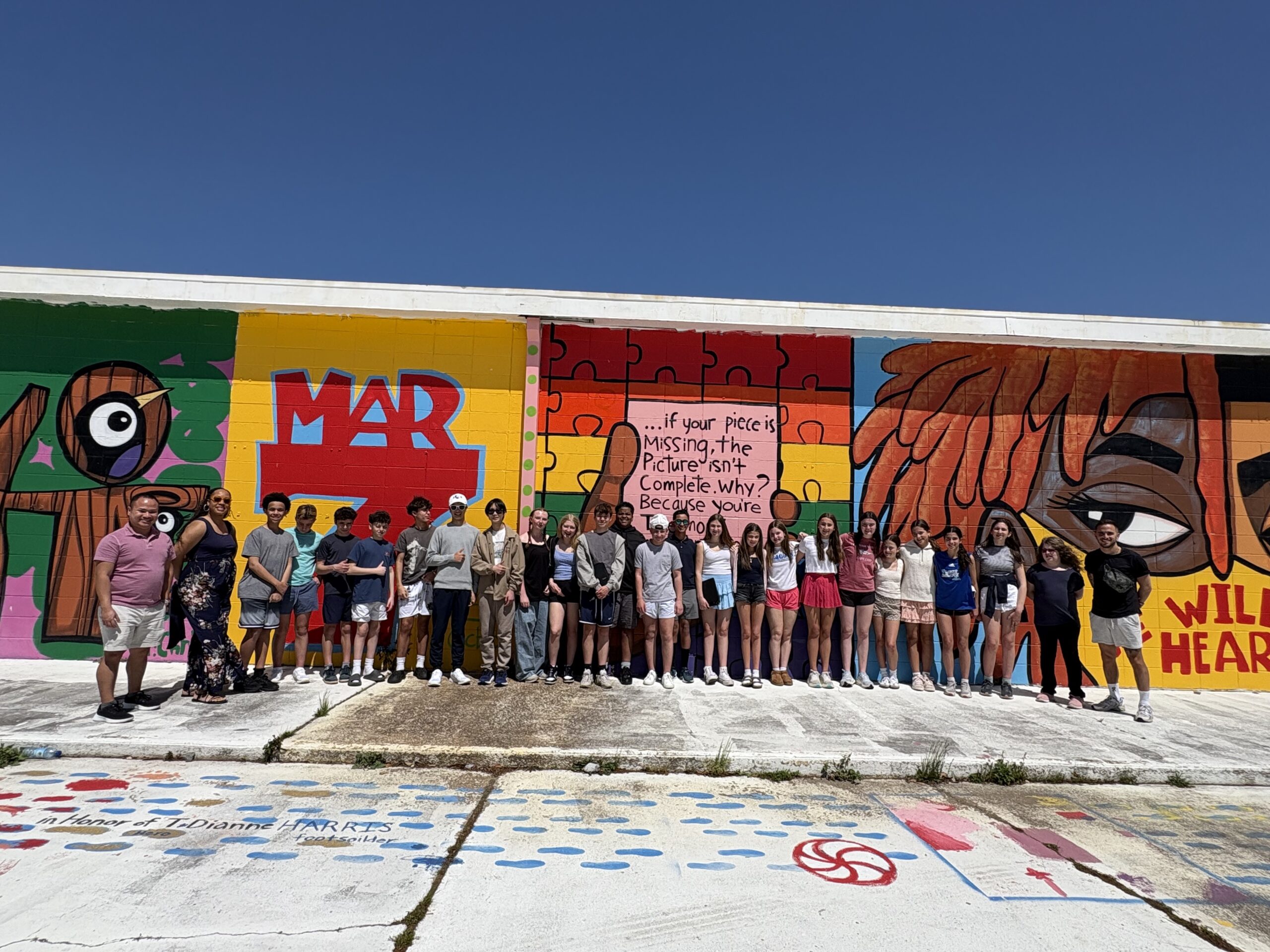
We had lunch on the ride to Selma. When we arrived, students had the opportunity to take a guided tour with Civil Rights activist Barbara Barge. Barbara is a lifelong resident of Selma who participated in the 1965 Voting Rights March with Dr. King and is a fellow foot soldier with JoAnne Bland.
Barbara showed us the Foot Soldiers Park in Selma created by JoAnne Bland as a remembrance of the movement and a space for young people in the community to play outdoors, share their art, and plant in community garden beds.
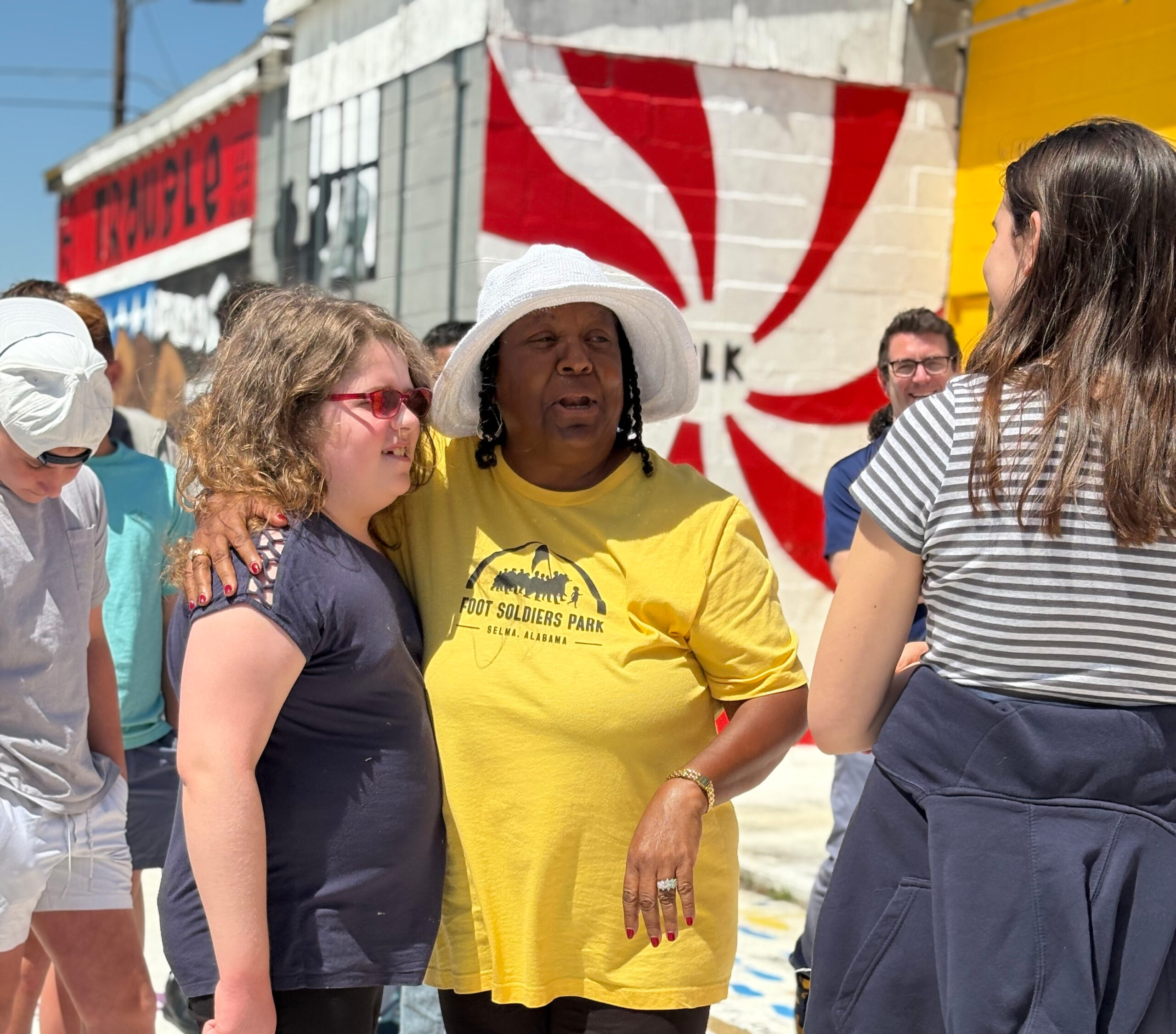
Barbara joined the movement at age 15. She joined because she heard her classmates shouting down the hallway “we need your bodies.” She learned that teachers and parents had been walking for the vote but the white employers threatened them when they would line the streets to see who was marching.
So the students replaced the adults who could not continue to march for fear of losing their jobs.
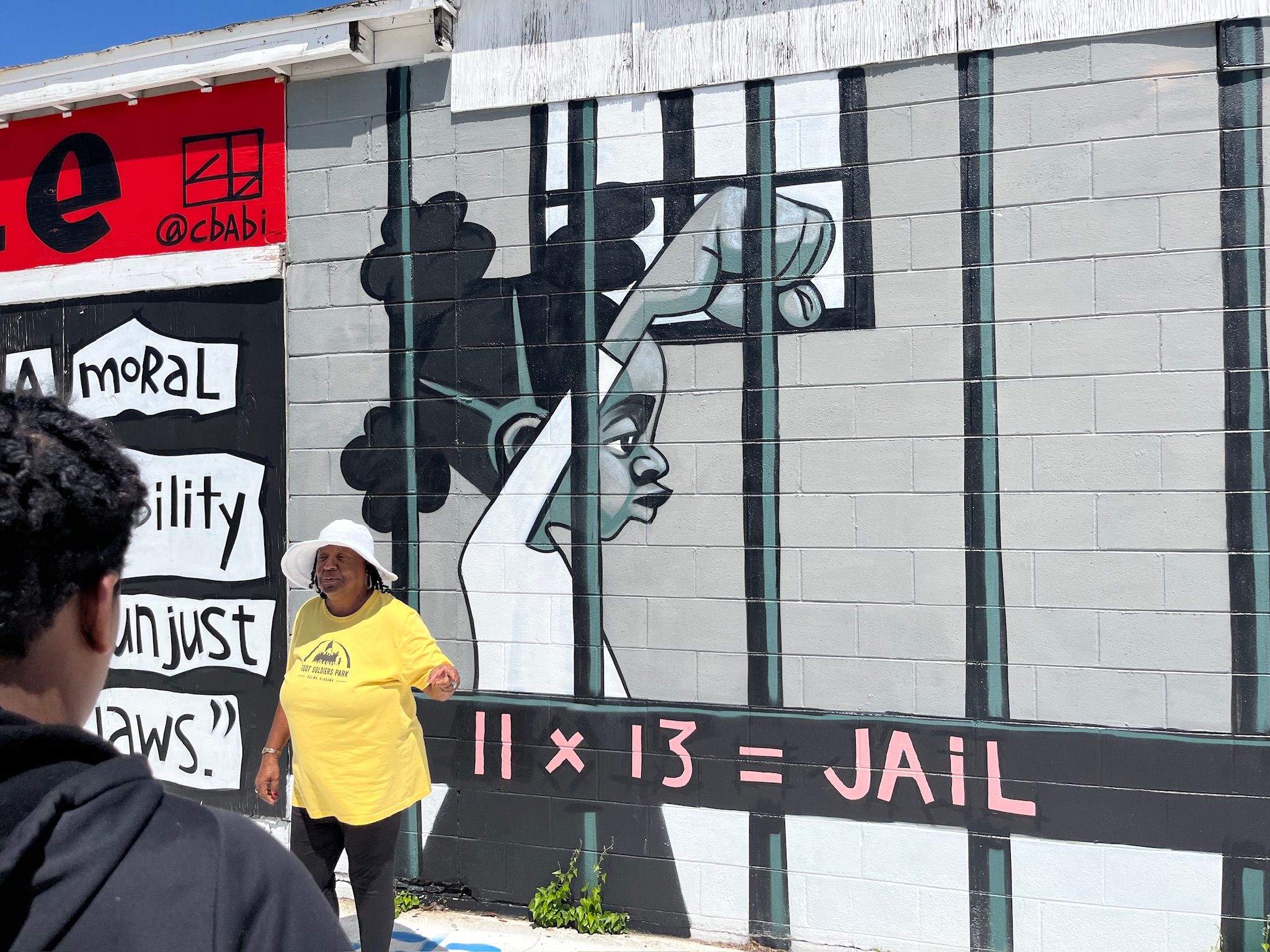
Barbara showed us a mural of JoAnne Bland. By age 11 she had been jailed 13 times.
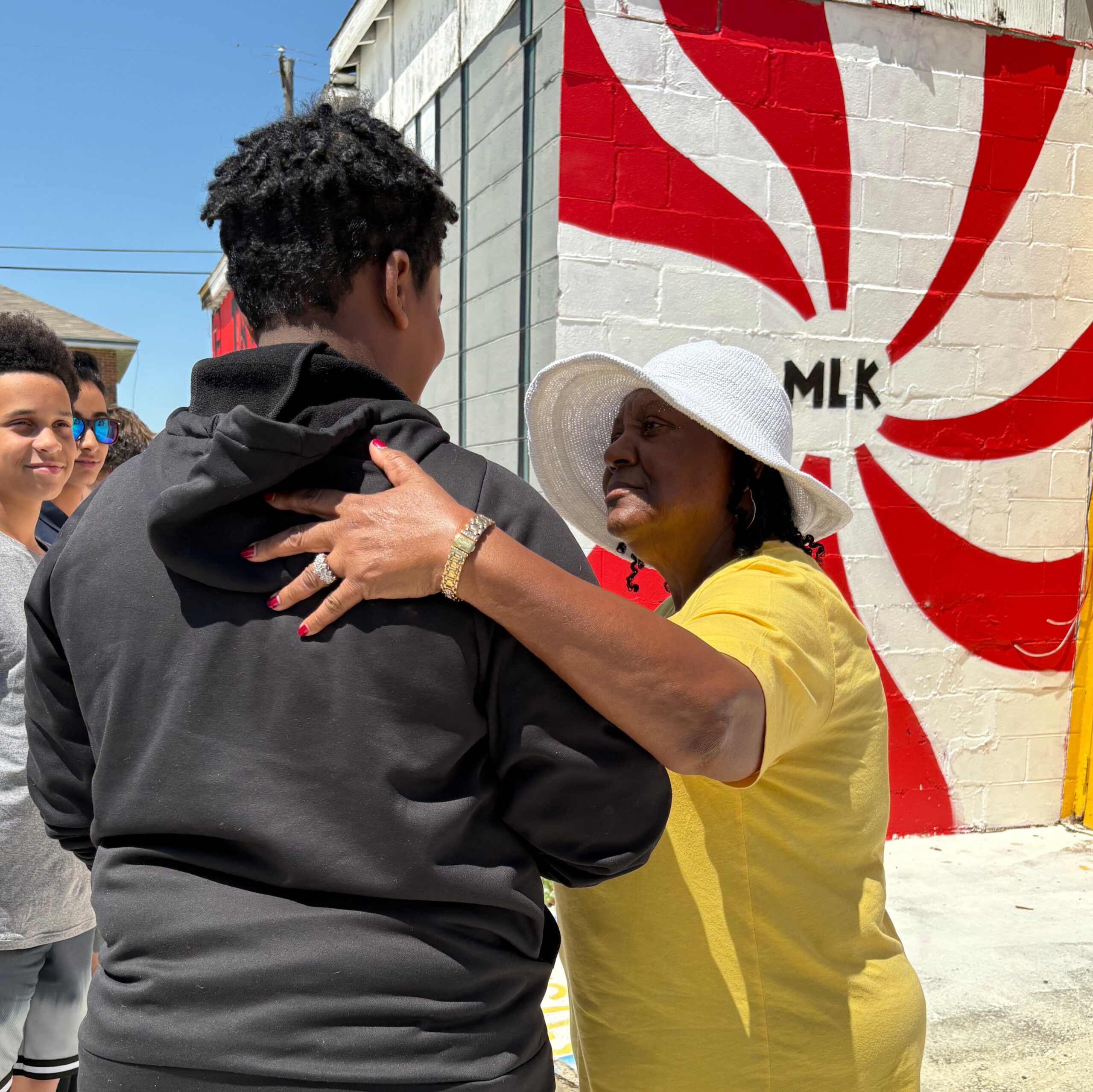
This mural is painted like a peppermint because MLK used to greet the children of Selma, talk with them and leave them with a peppermint in their hand. Barbara met him but he ran out of peppermints so he asked her if he could give her a kiss on the cheek instead.
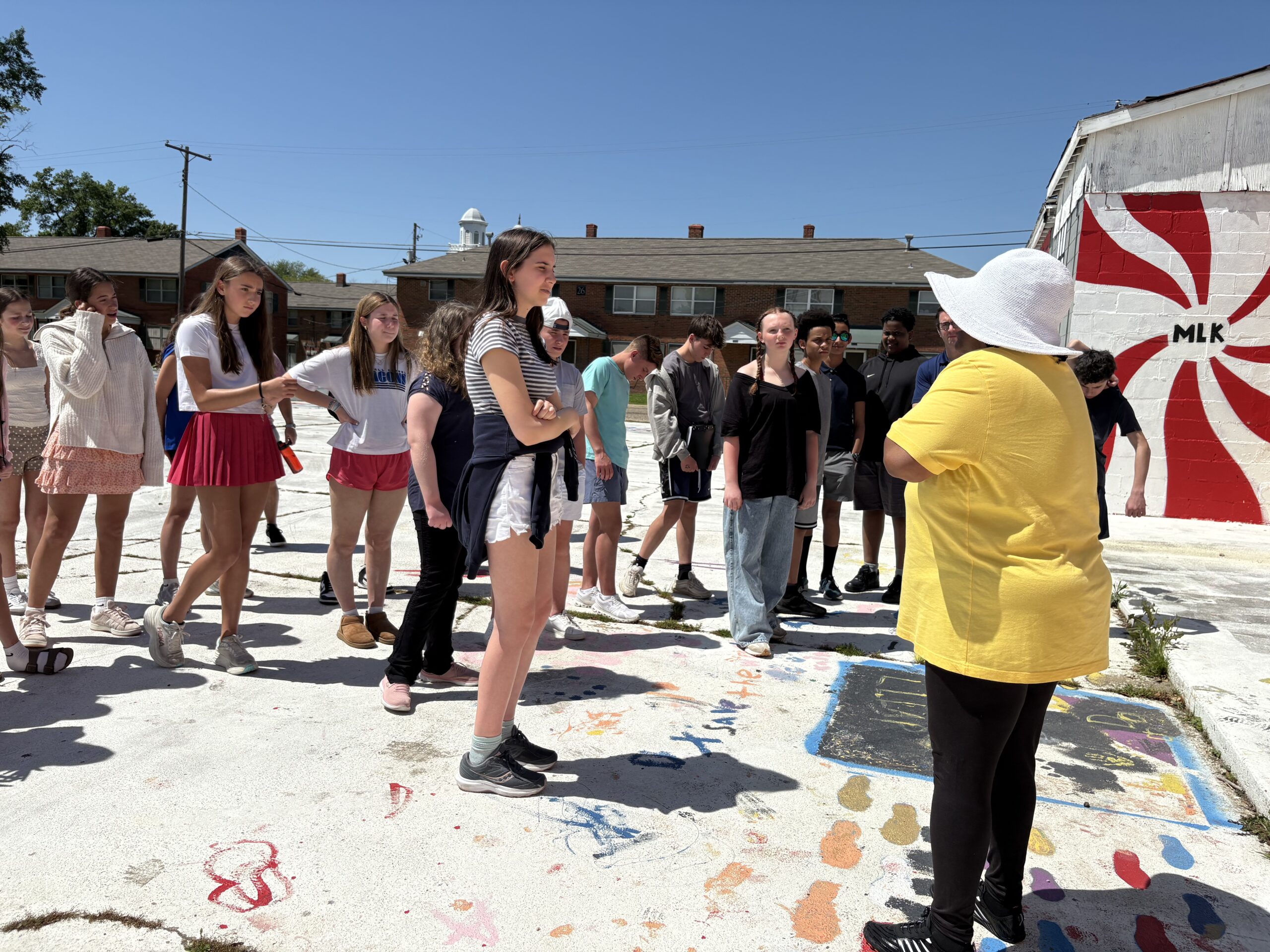
Barbara is a retired teacher who taught for 28 years. She encourages students to read deeply because she wants them to be able to educate themselves and not rely on someone else to figure things out for them.
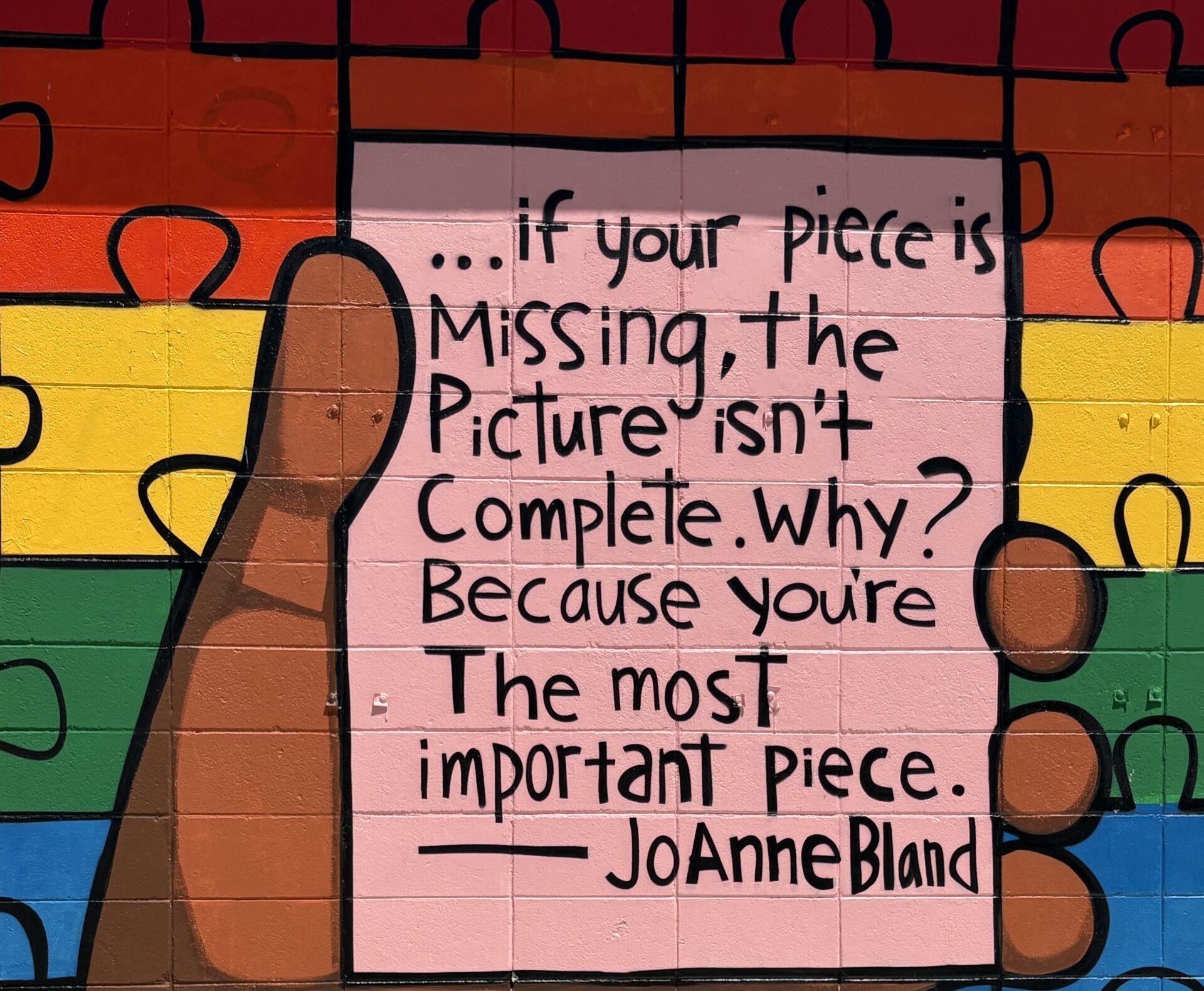

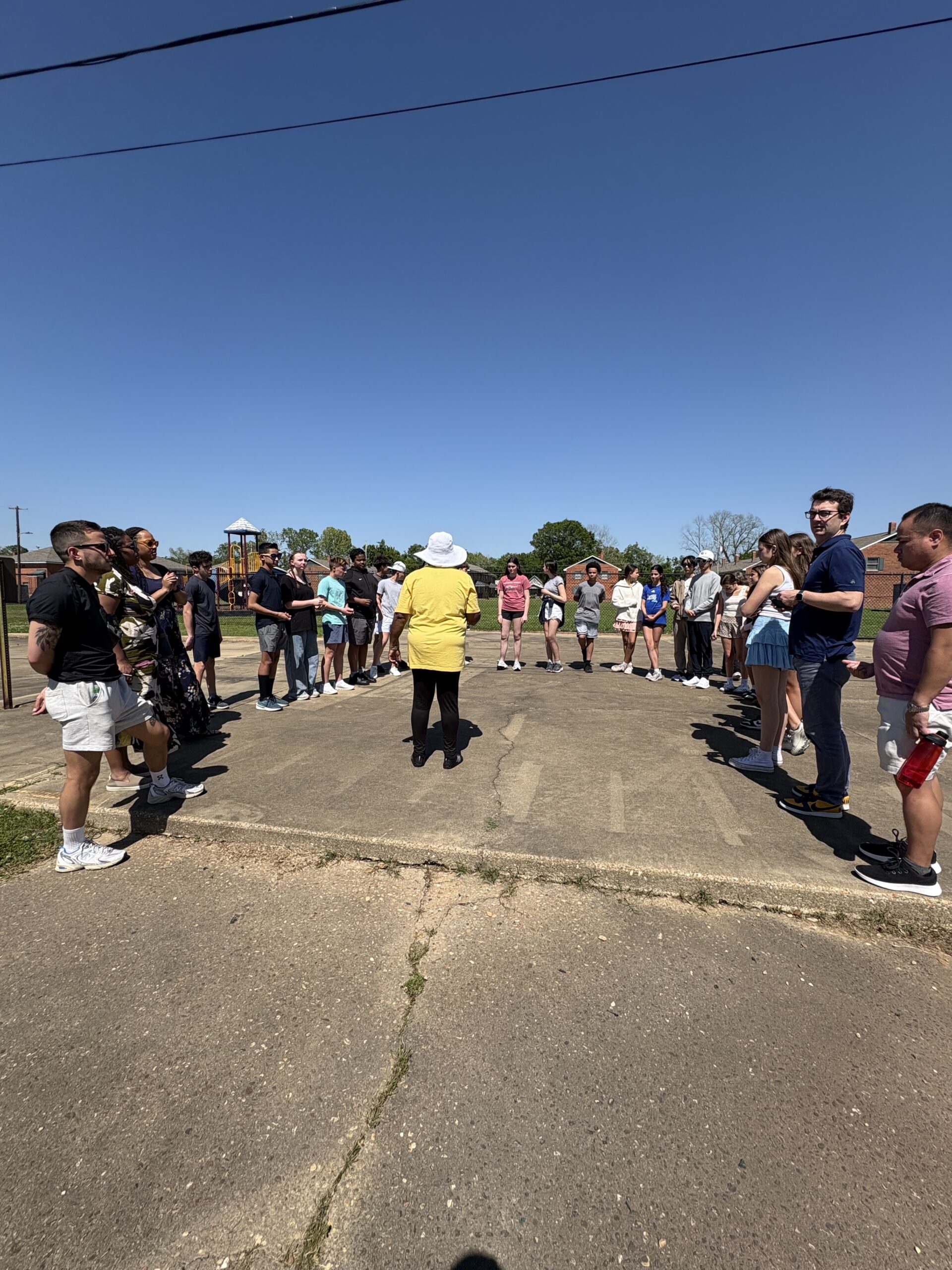
Students stood with Barbara on the patch where the marchers met on Bloody Sunday, facing the Brown Chapel AME church.
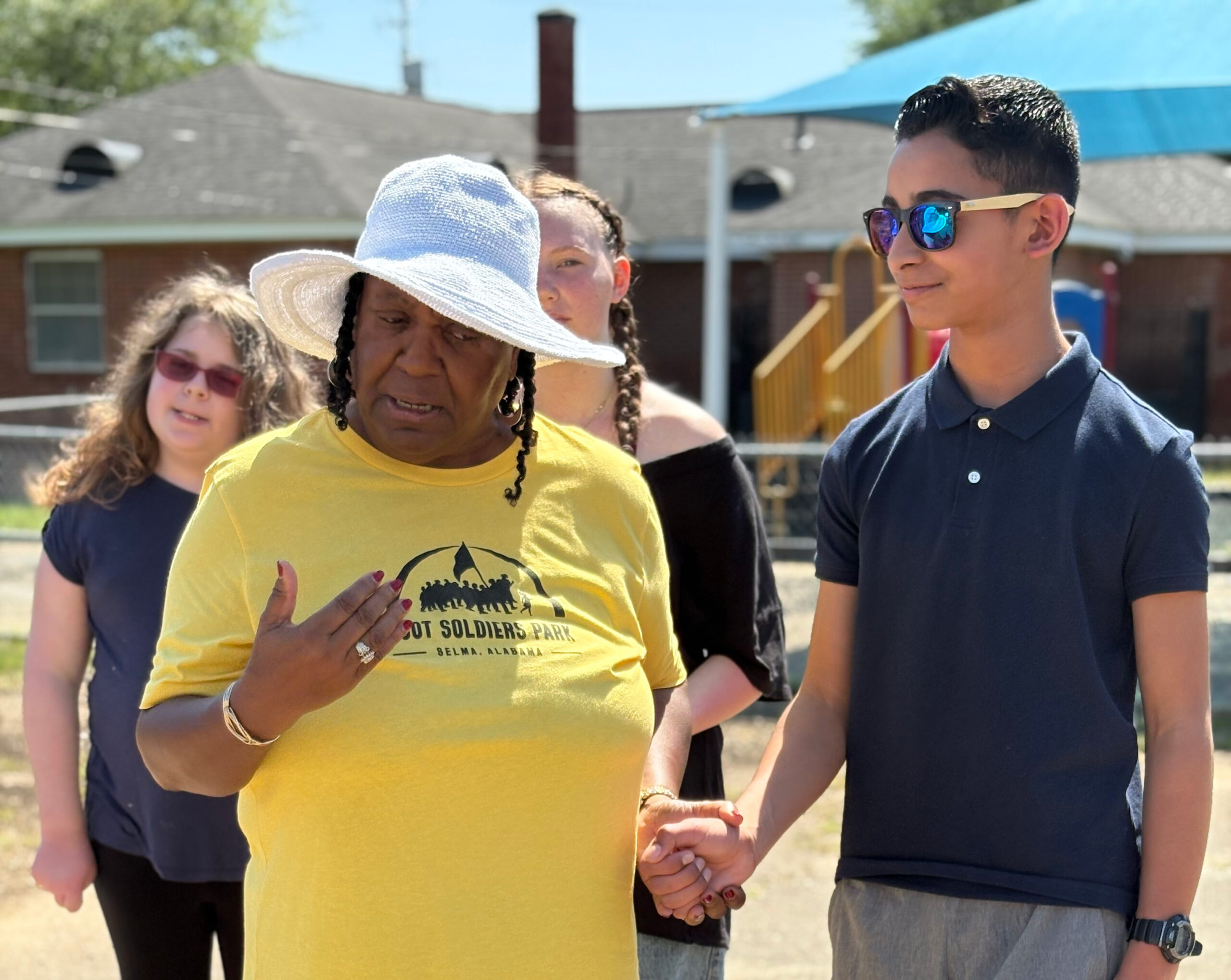
Each student picked up a rock to remember a person who has had an important impact on civil rights. Barbara asked three to share the person‘s name and say: “I am a history maker.”

They did so proudly.
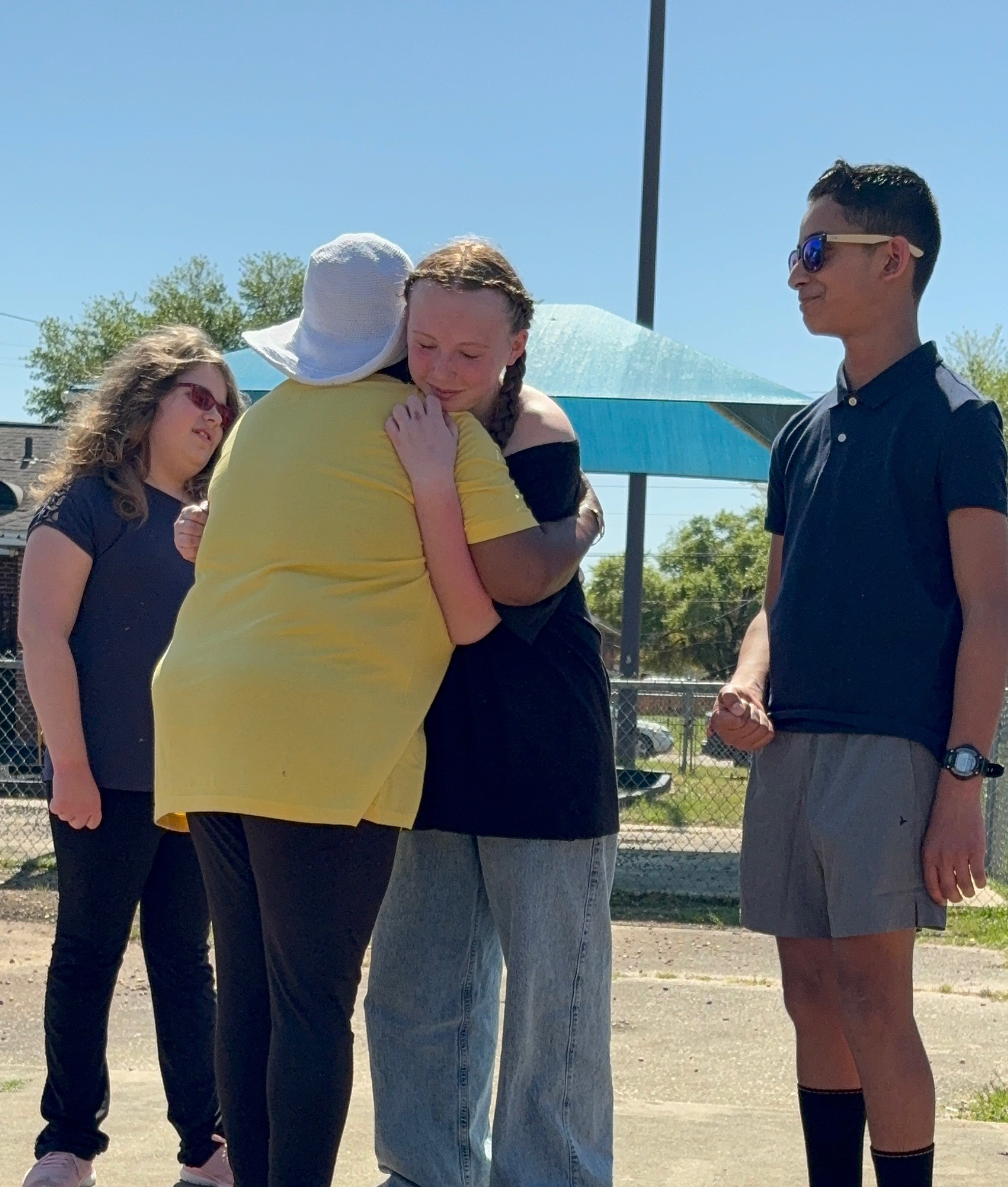
“Do right because it’s always right to do what’s right” Barbara said.
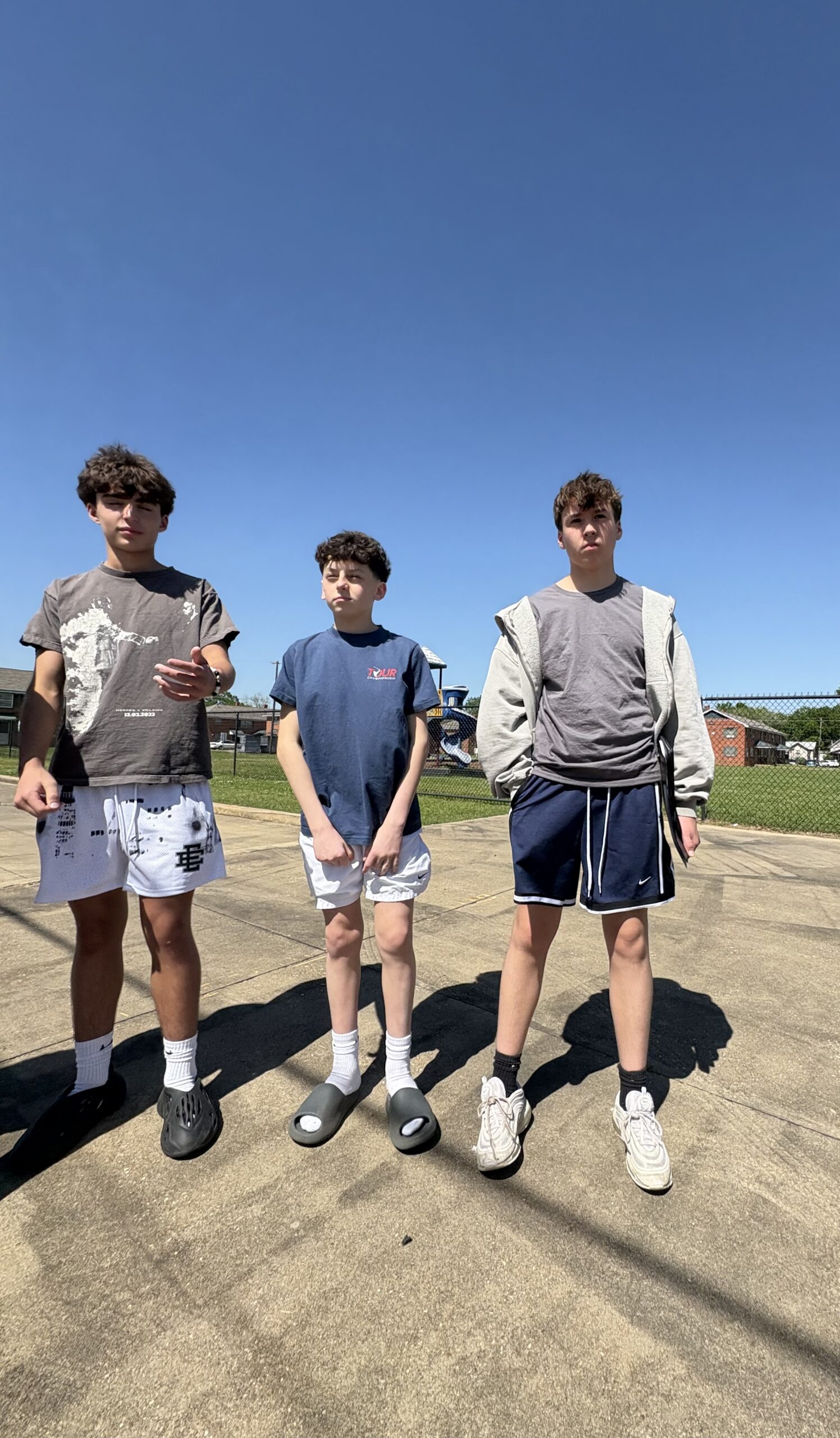
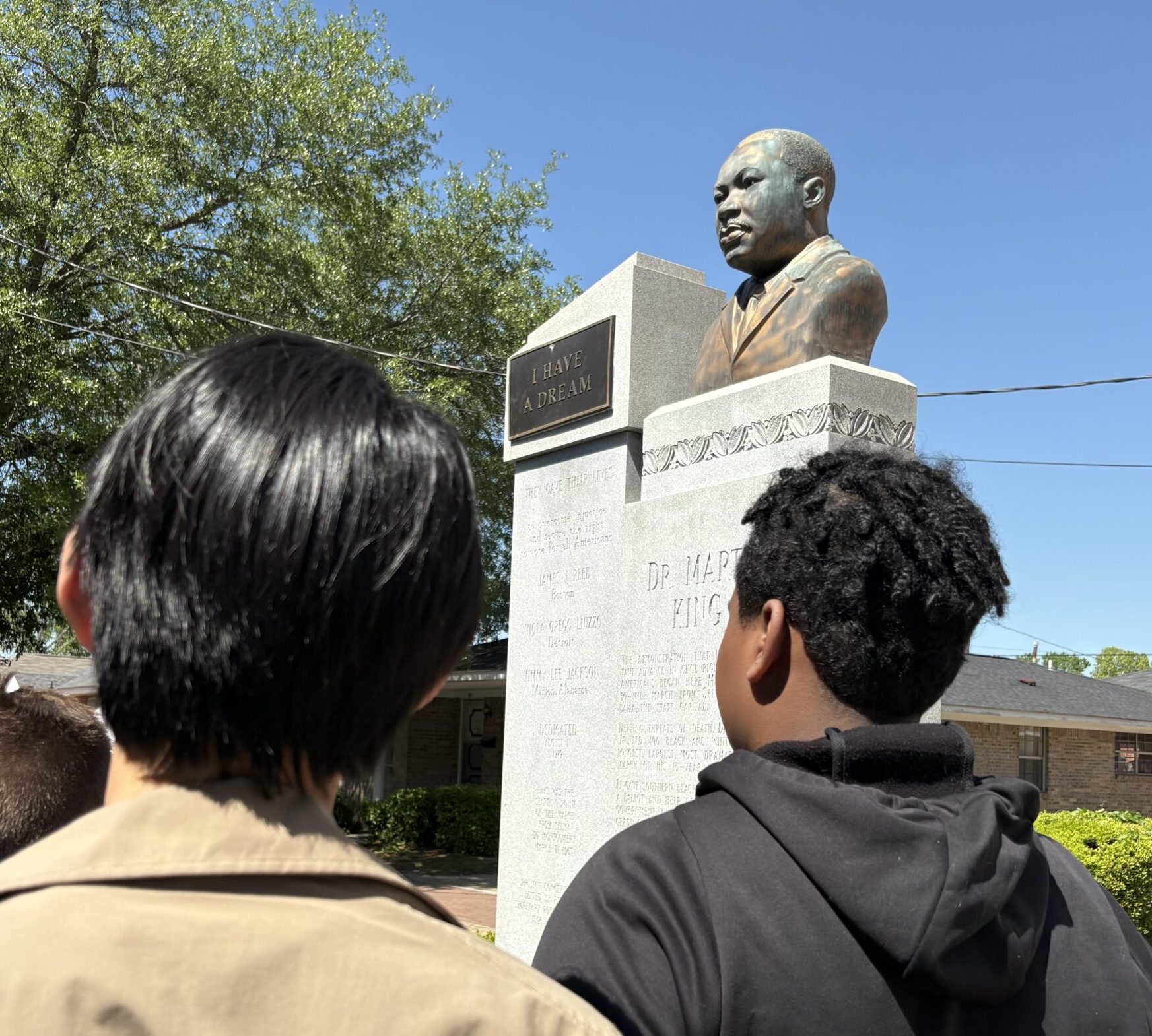

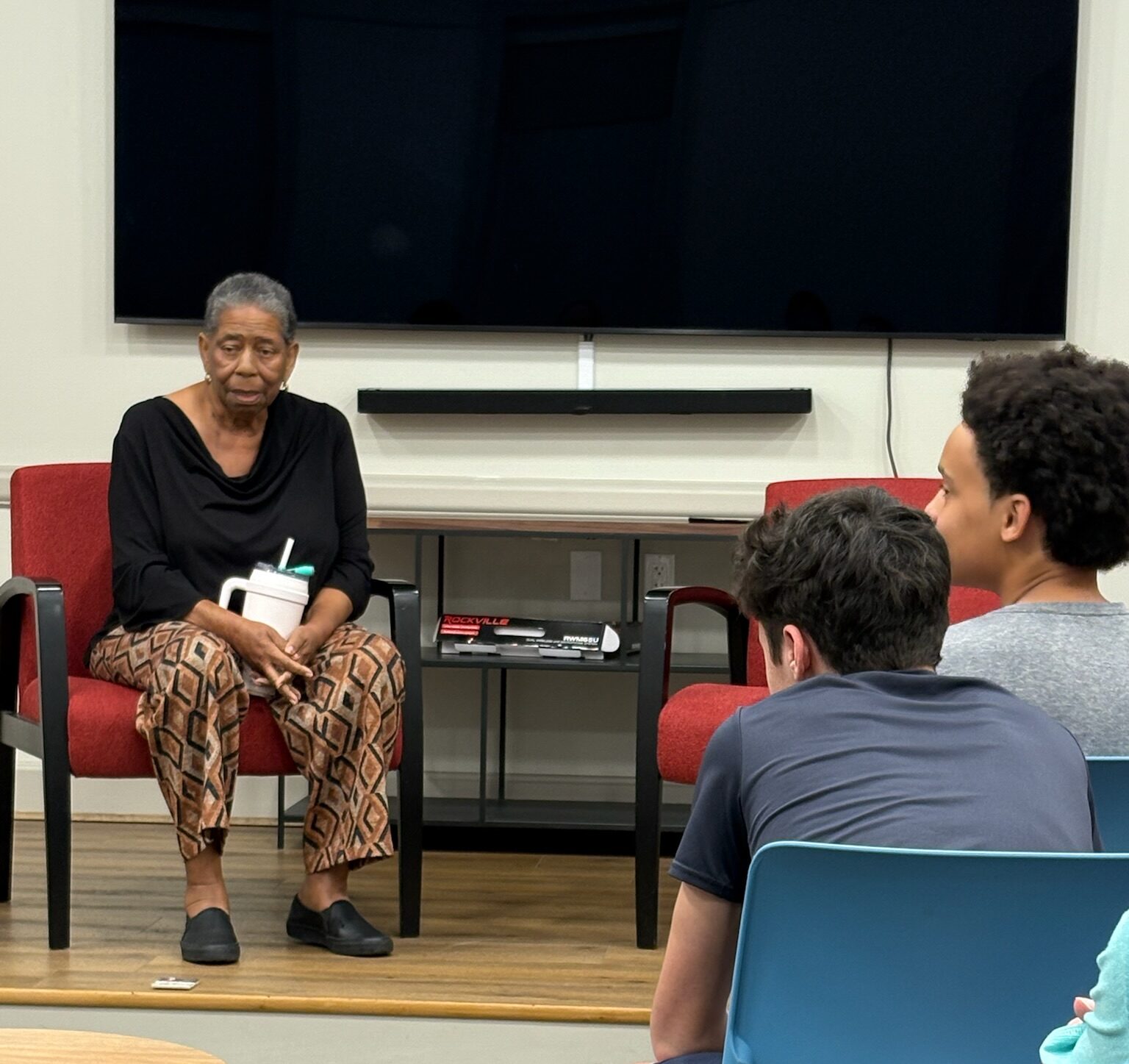
After our tour with Barbara, we were joined by JoAnne Bland. Like Barbara, JoAnne is a civil rights activist and foot soldier who participated in the 1965 Voting Rights March with Dr. King. JoAnne shared about her experience as an 11-year-old student who joined her older sister, Lynda on the day that became known as Bloody Sunday. She marched from Selma over the Edmund Pettus Bridge to the state capitol in Montgomery with leaders like John Lewis of the Student Nonviolent Coordinating Committee and Hosea Williams of the Southern Christian Leadership Conference.
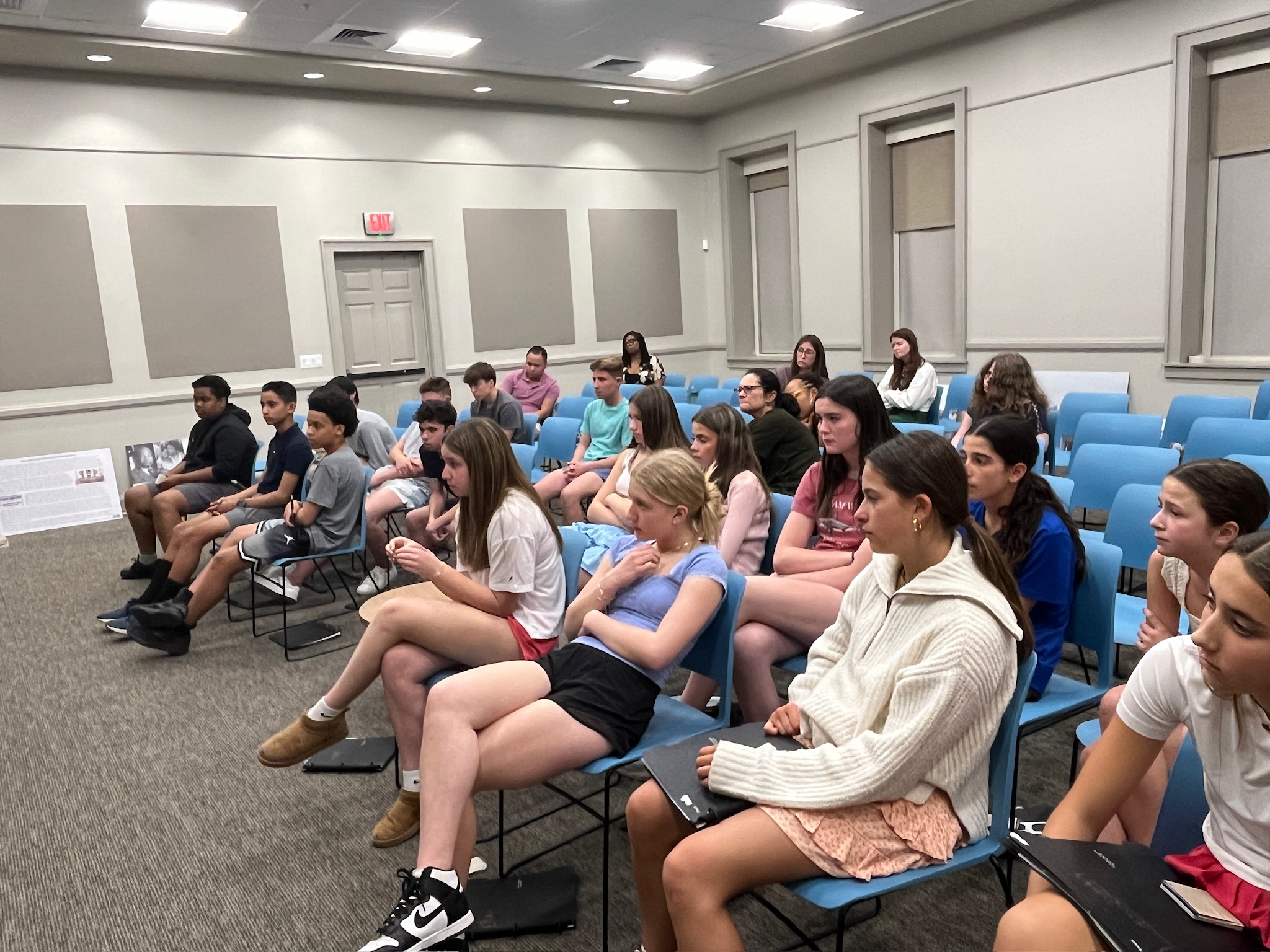
JoAnne recounted “I had no idea there would be violence on the bridge that day so don’t call me brave.” Yet she returned to the bridge.
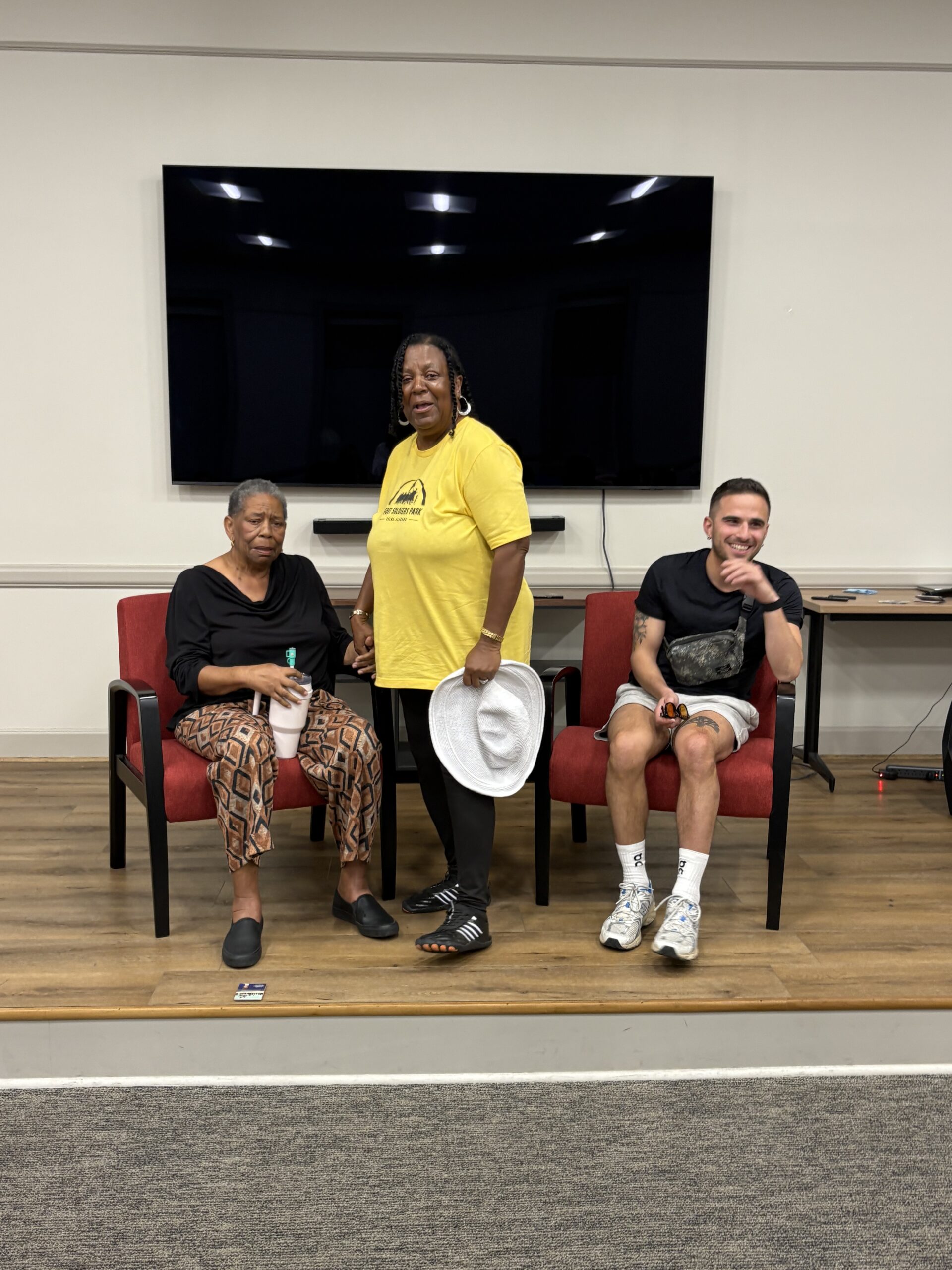
JoAnne talked to us about her experiences in Bloody Sunday, Tunaround Tuesday, and a final successful march to Montgomery with the same officers who had attacked the marchers on Bloody Sunday now forced to protect them.
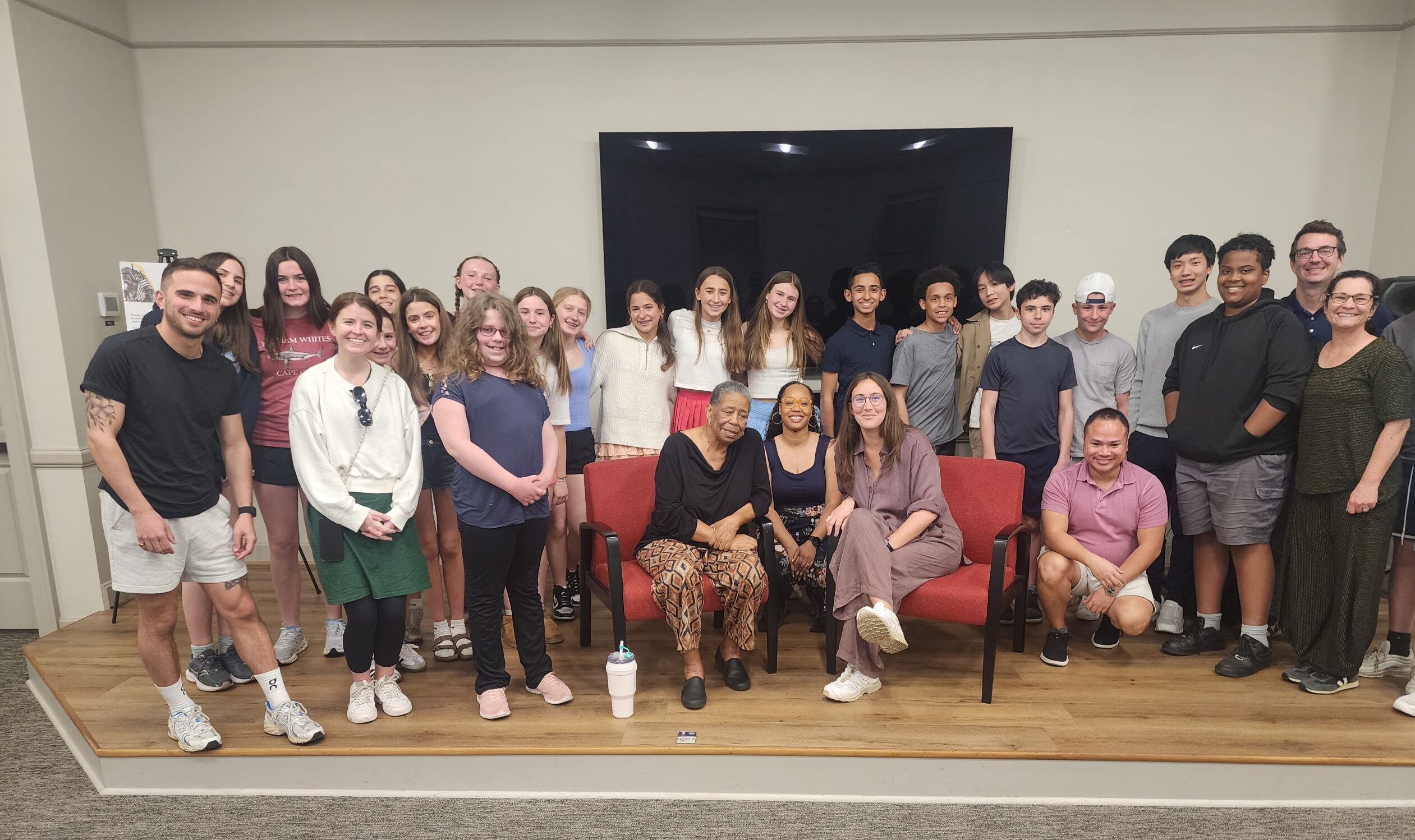
Barbara emphasized to us how much JoAnne encourages young people to register to vote, exercise their right, and push to protect voting rights. She told students “That vote must be mighty important because they don’t want everybody to have it.”
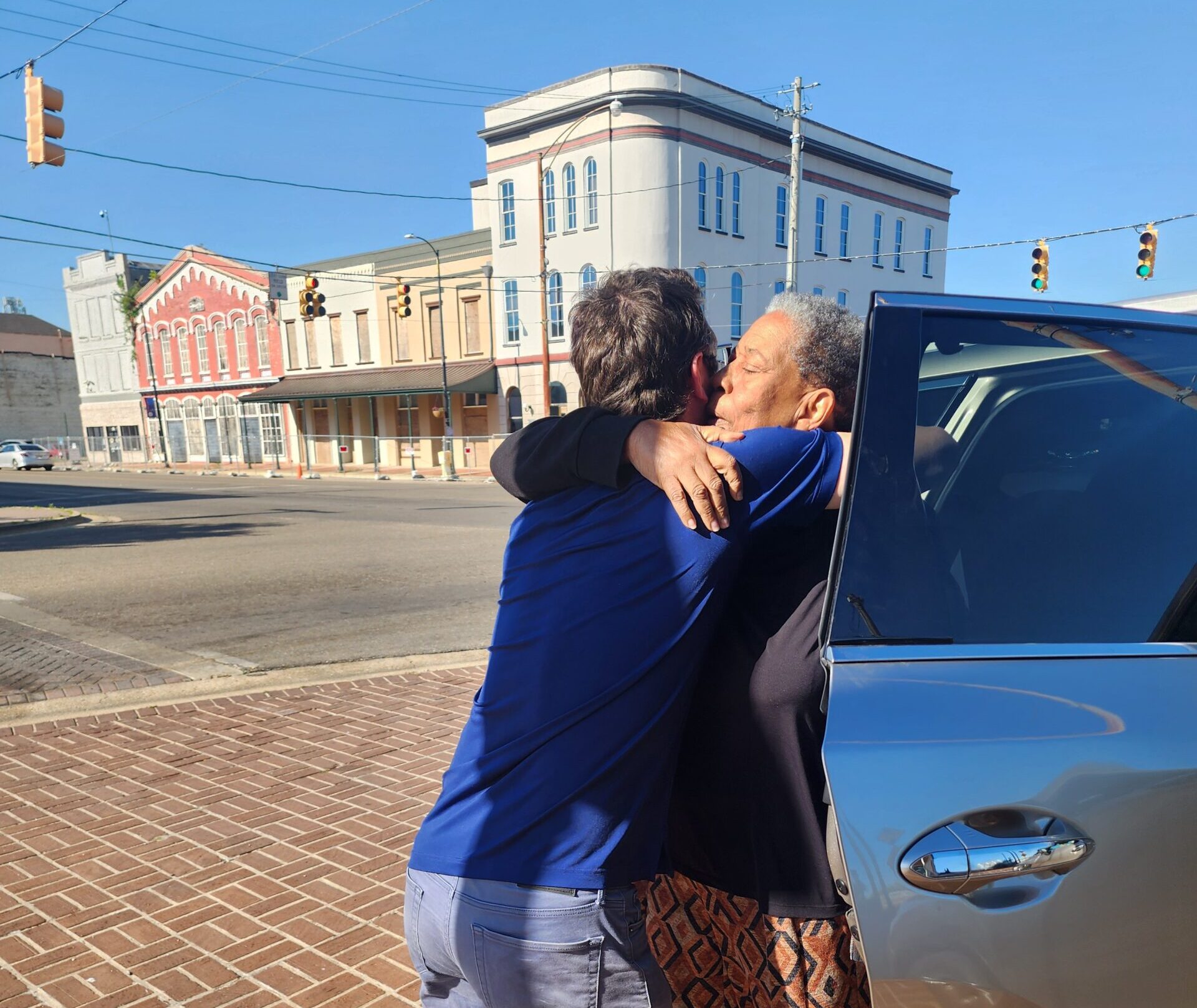
It was incredible to spend time hearing first-hand stories with JoAnne and Barbara.

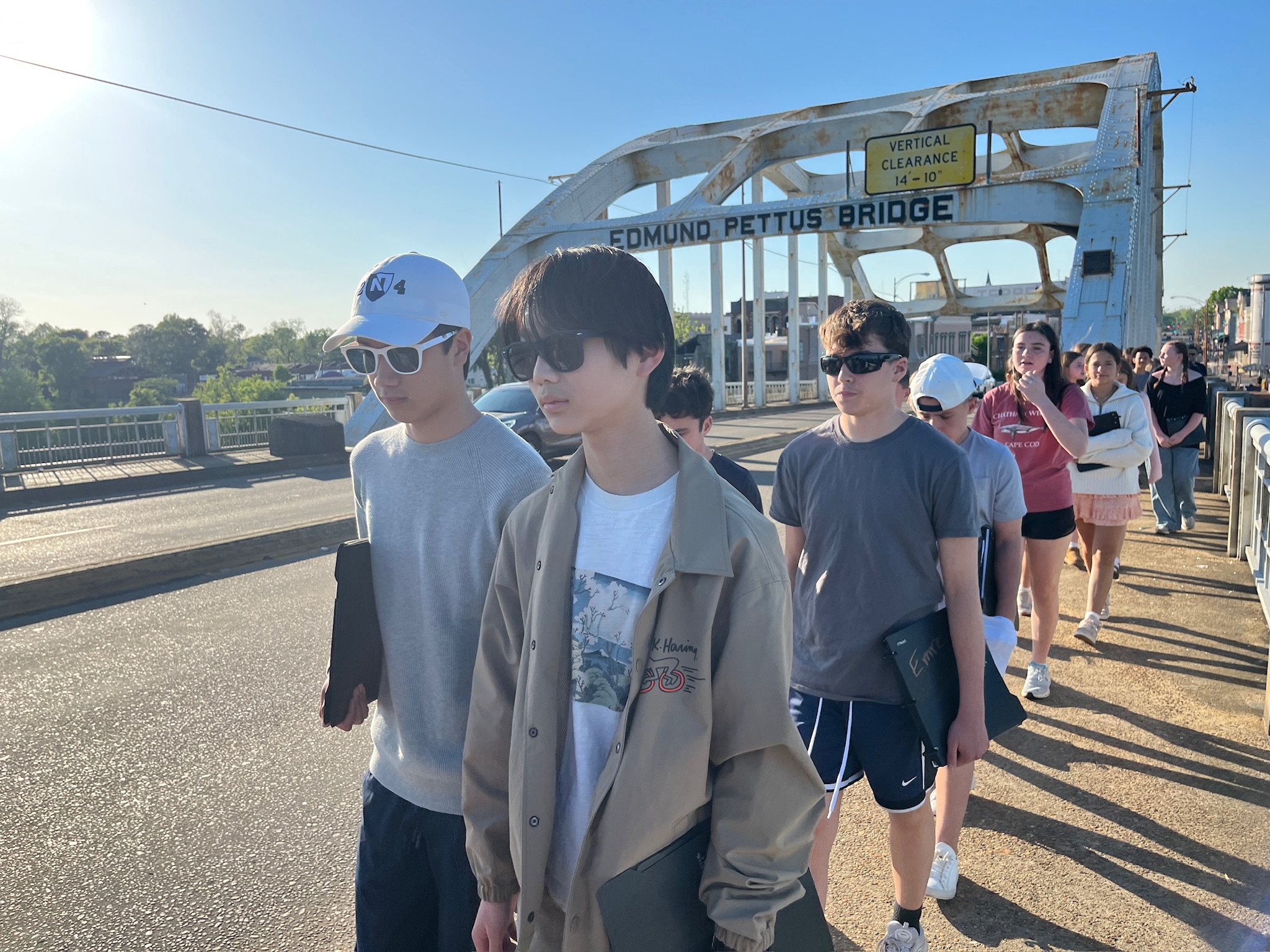
After meeting with Barbara and JoAnne, CRS students and teachers retraced the marchers’ steps over the Edmund Pettus Bridge. Two by two, we walked in intentional silence, reflecting on three important questions JoAnne asked us moments before…

“What would you add to this world?”
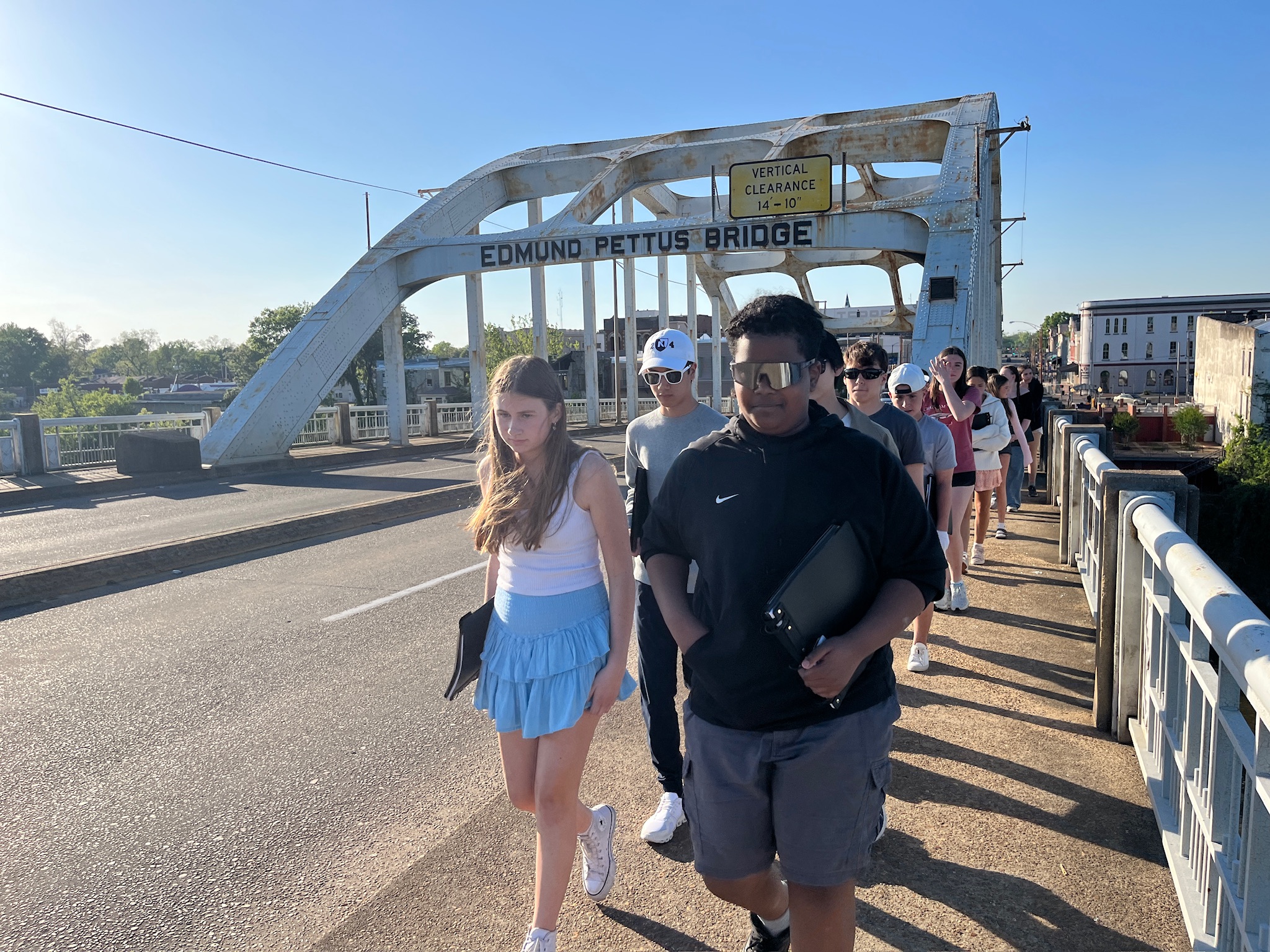
“What would you take out?”
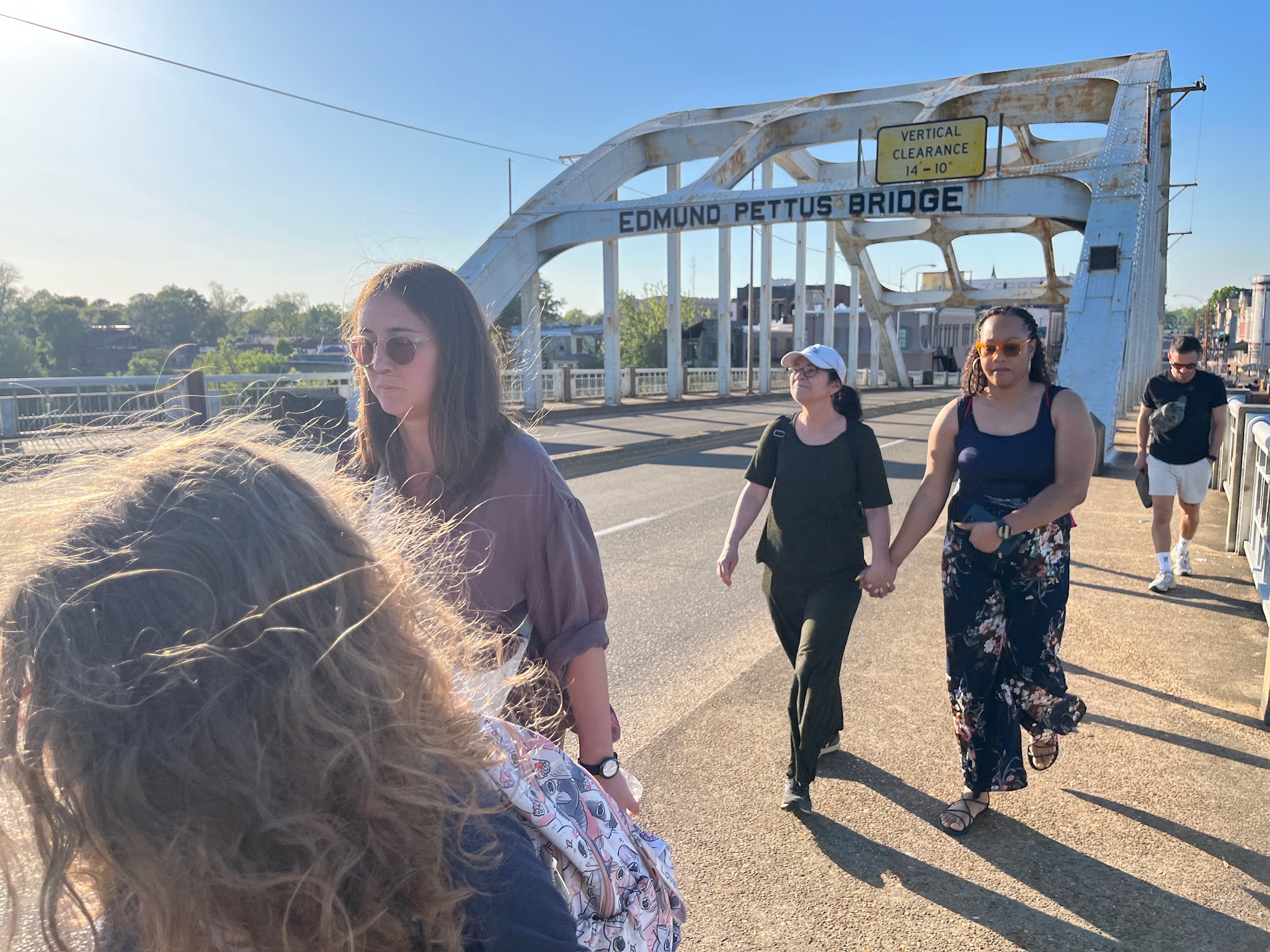
“What would you build?”
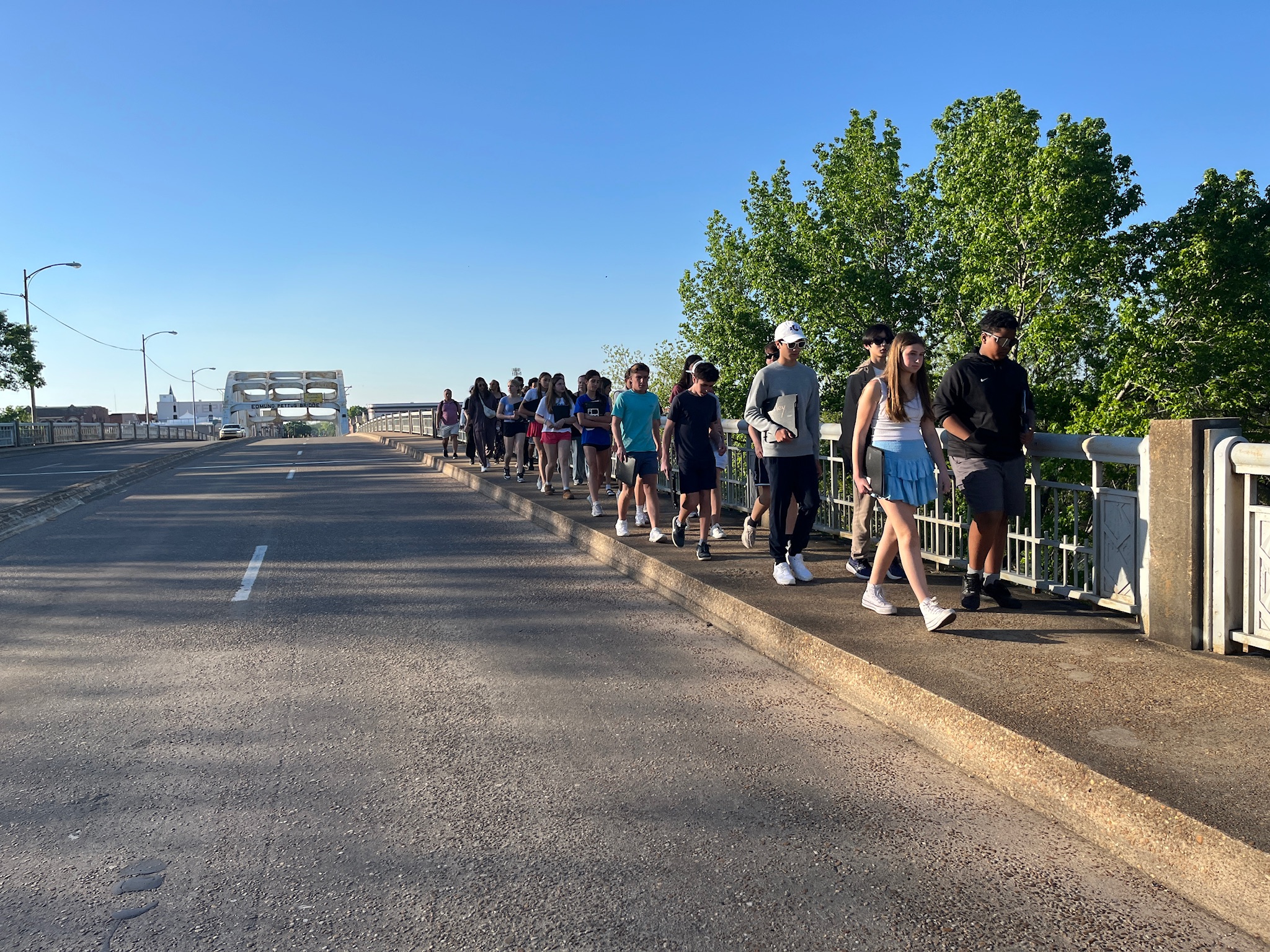
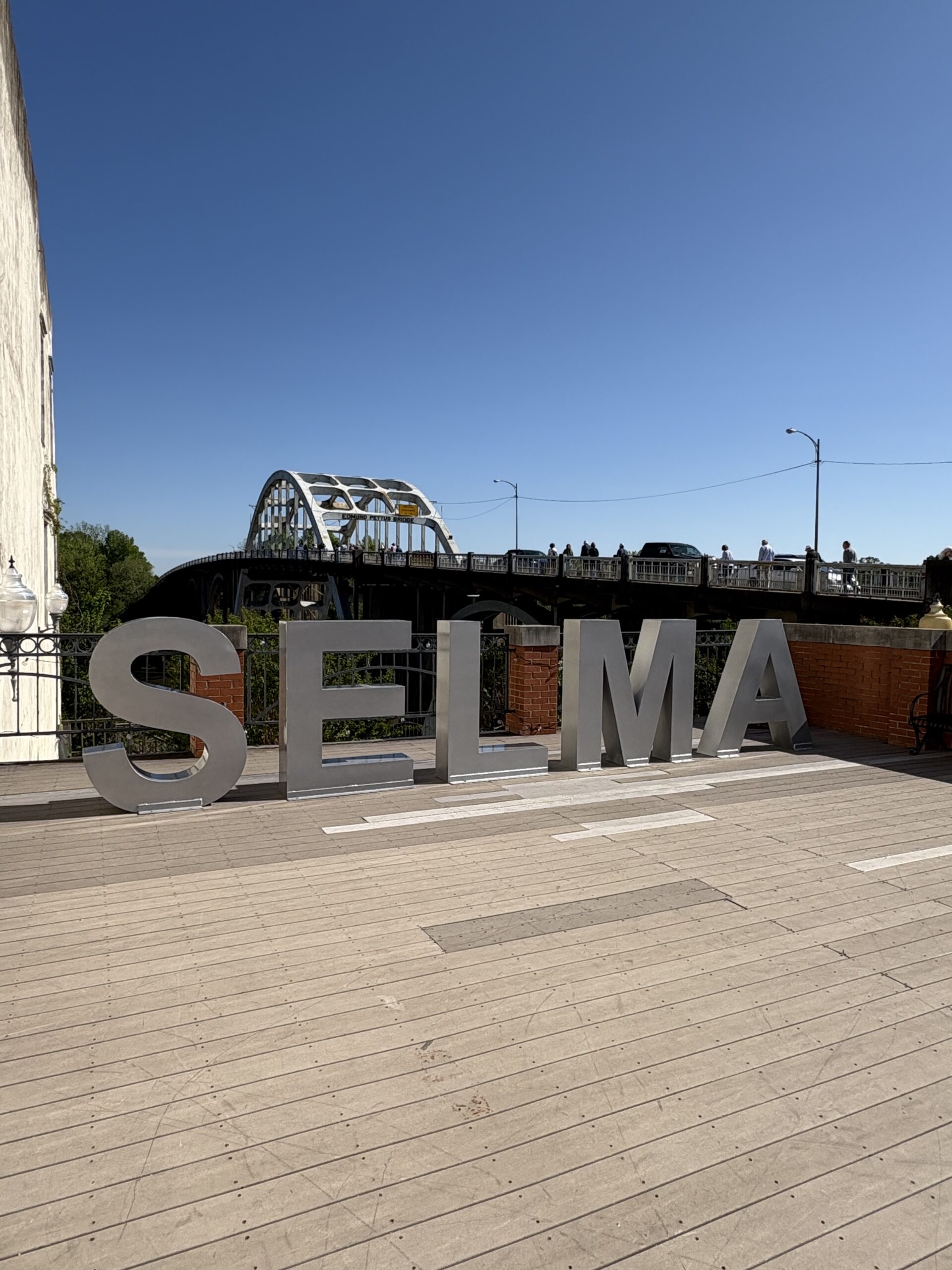
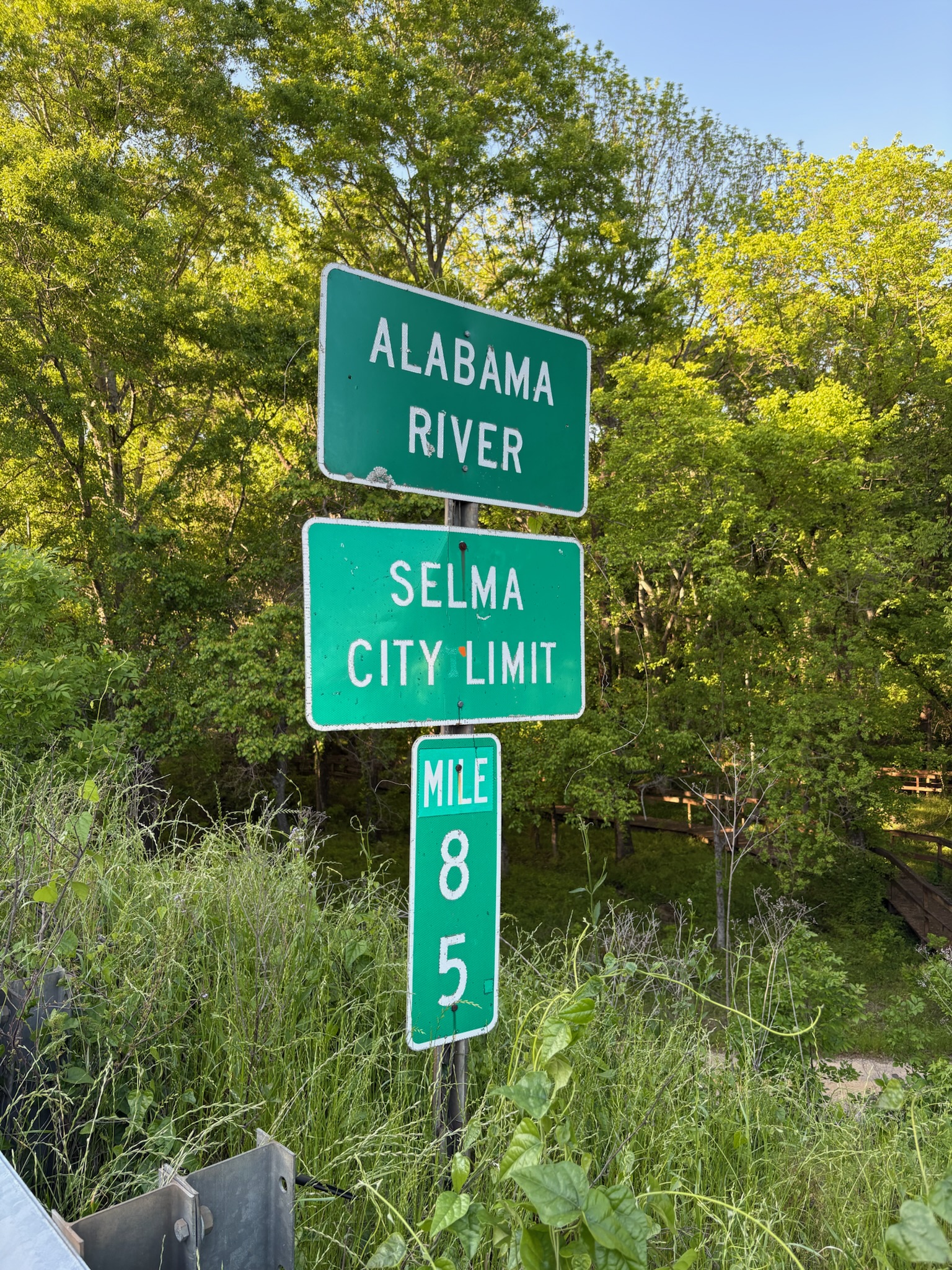
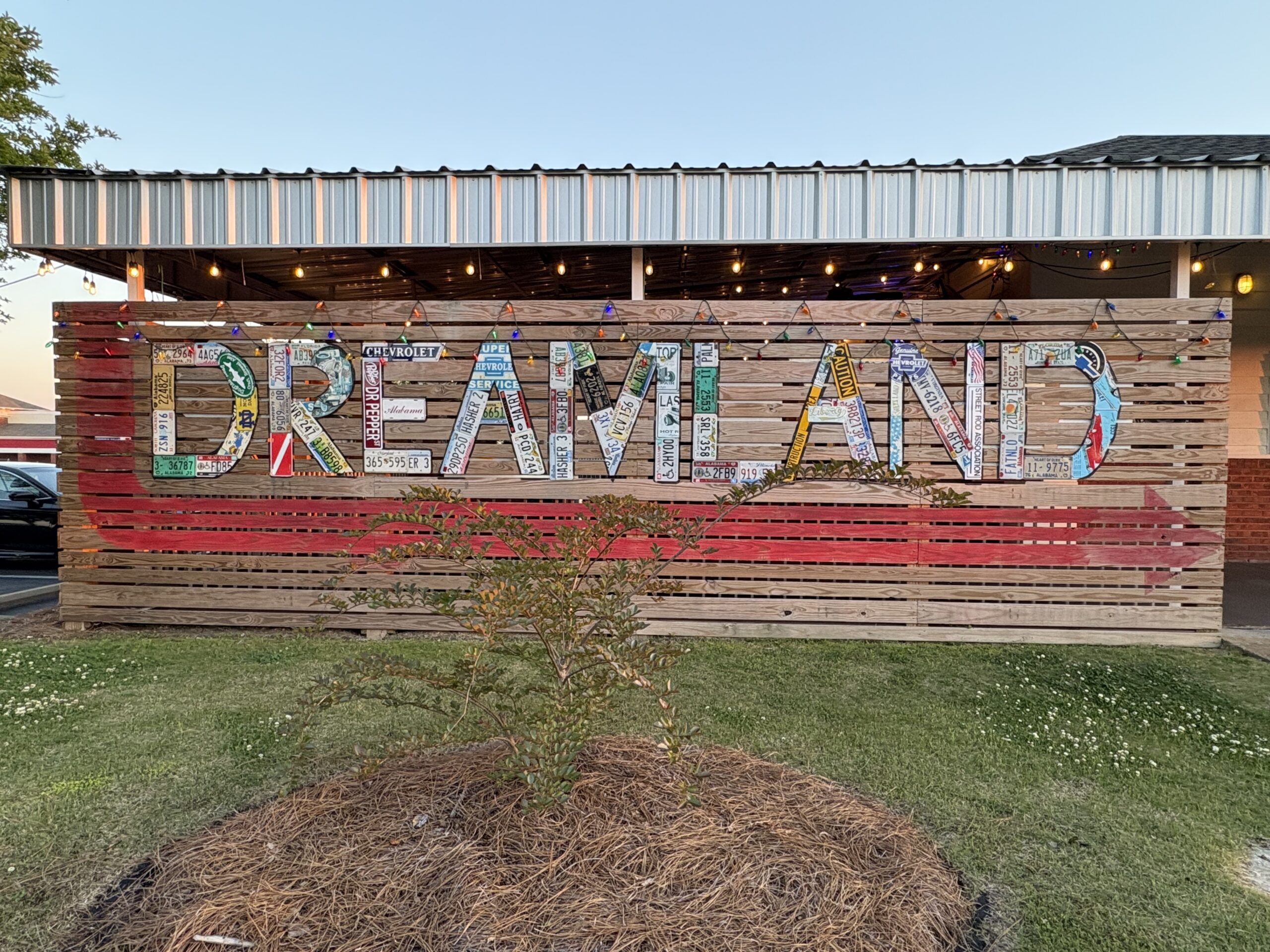
Next, we visited Dreamland BBQ in Montgomery for a delicious dinner.
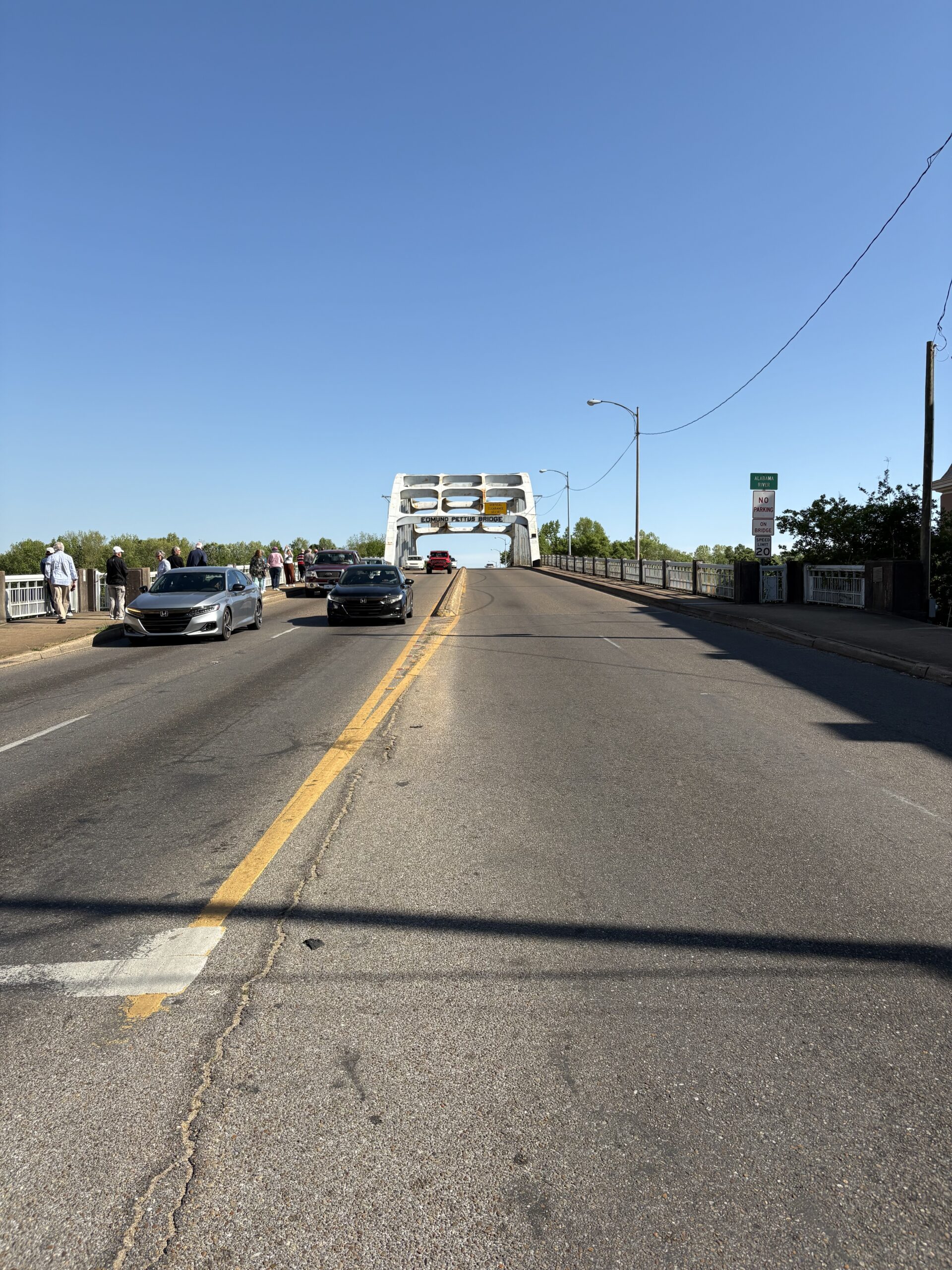
After, students headed back to the hotel to meet in family groups to process the experiences of the day and discuss the impact of Joanne and Barbara’s presentations. It was a valuable time for students to connect with their family group chaperone and each other.
